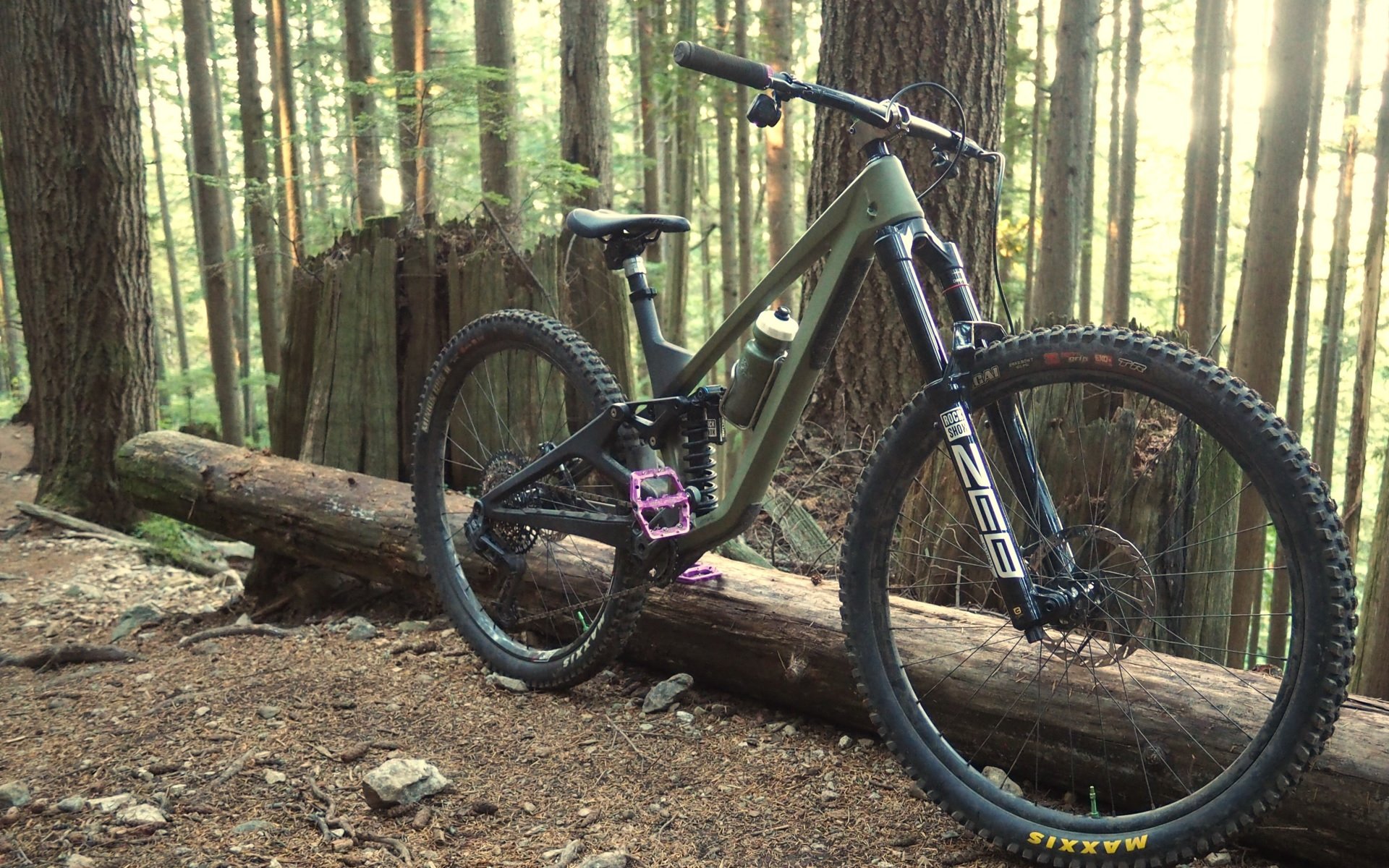
REVIEW
We Are One Arrival Wrap-Up
"Who cares about Derek Zoolander anyway? The man has only one look for Christ's sake! Blue Steel? Ferrari? Le Tigra? They're the same face! Doesn't anybody notice this? I feel like I'm taking crazy pills!" - Jacobim Mugatu, Inventor of the Piano Key Necktie
ONE LOOK?
Every version of the We Are One Arrival is the same bike. The same bike! Okay, this doesn't sound like much of an epiphany. After all, the heart of each version consists of identical Kamloopsian-carbon front and rear triangles. But here I am talking about something deeper. The A130, A140, A152, and A170 all want to be ridden the same way: on the edge.
Whether it's a snappy 130mm rear travel build or the much deeper 170mm setup, the Arrival goes. It goes! Pump the pedals and the bike shoots forward. Turn the pedals and prepare to receive compliments on how well you're floating up technical terrain with none of the wallow that normally accompanies bikes marked with the 'great technical climber' merit badge.
At the same time, again in any guise, there's never a question of whether the bike is delivering what's been paid for in terms of the travel. Some of the best pedaling long-travel bikes unfortunately also feel like shorter travel rigs on the way down the hill. That's not the case with any of these setups. They're all the same, they all want to be ridden the same way. Hard, fast, confidently. Choosing the right Arrival involves first deciding that a WeR1 is for you, and then deciding which version you'd best complement.
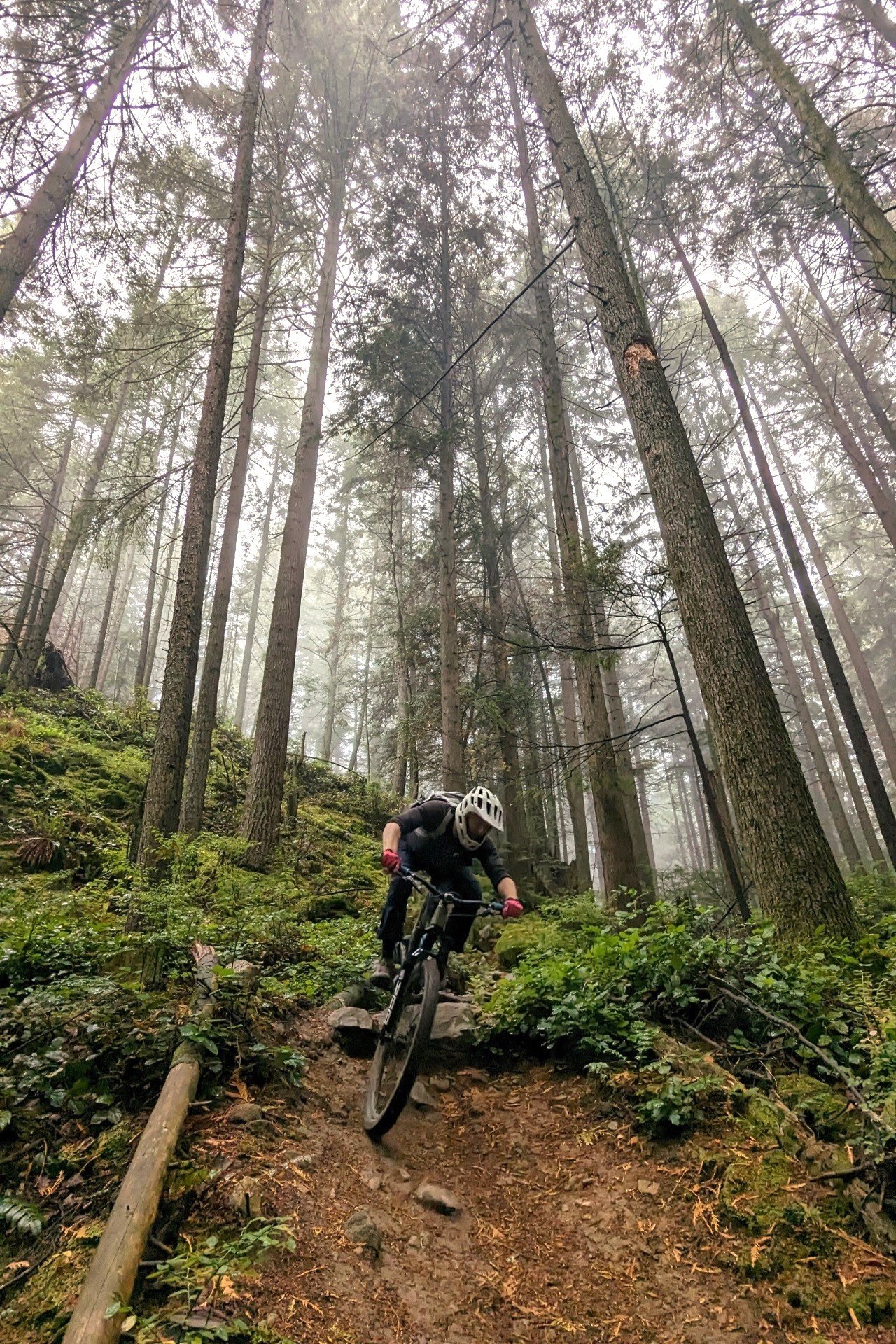
The Arrival A170 f*cking goes. I've not ridden a faster non-DH bike. Photos - Jac
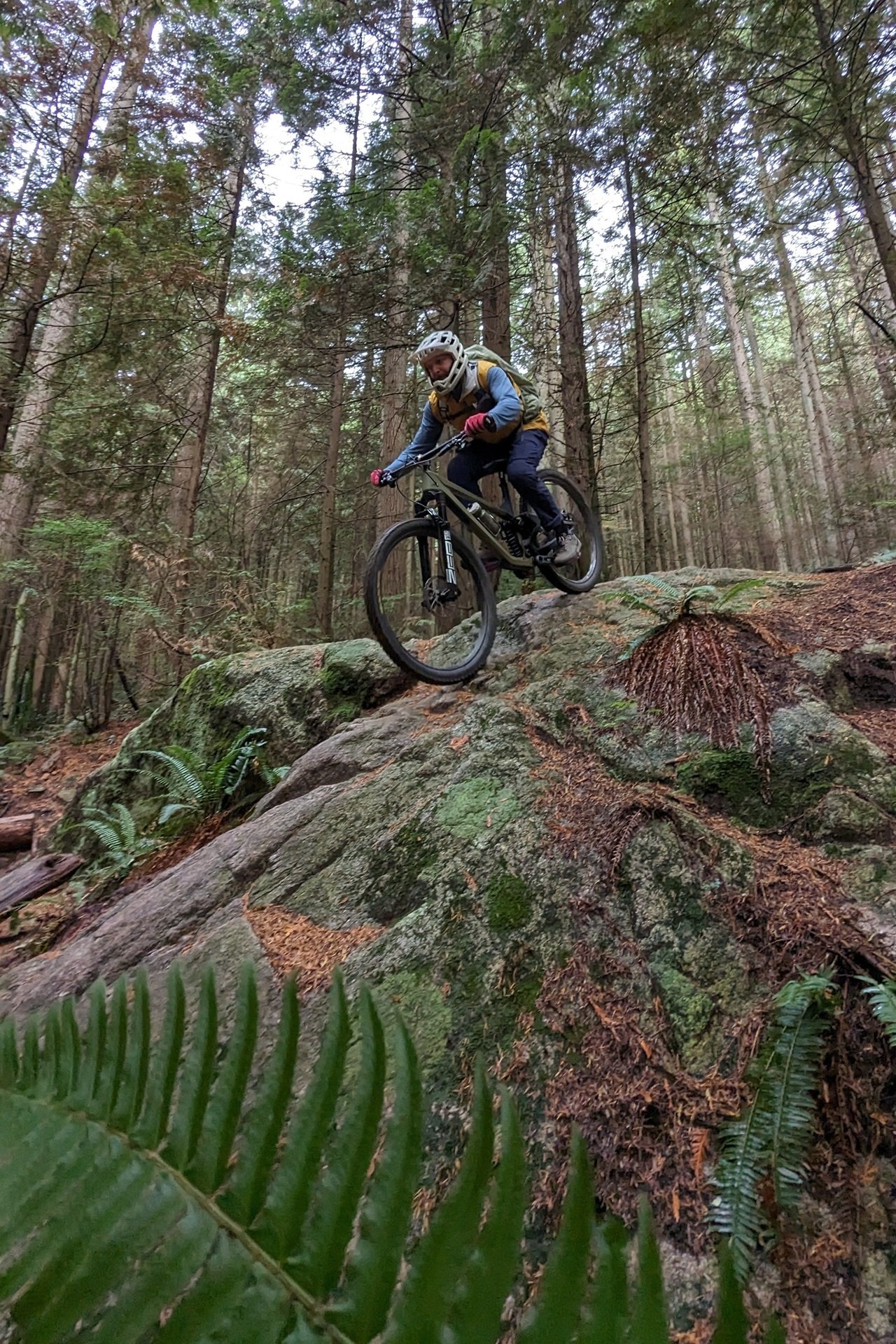
Or at least a non-DH bike that wants to go faster.
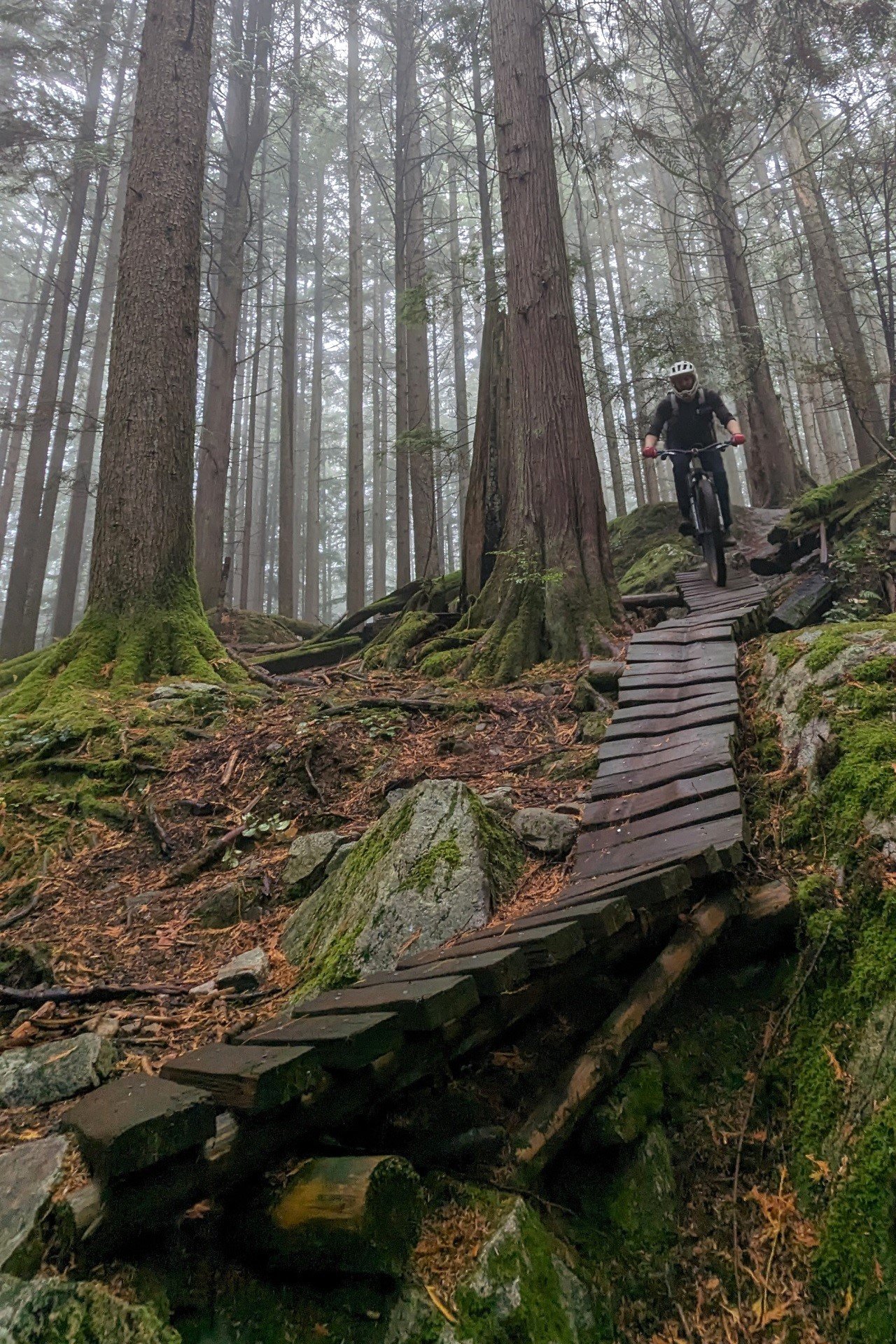
Like every Arrival, it wants to be ridden at the edge.
To The A170...
This last installment of my We Are One series was meant to be a review of the biggest, baddest Arrival build option. It features a 170mm RockShox Zeb Ultimate suspension fork and a Super Deluxe Ultimate coil rear shock and after a couple of spicy change-of-season moments, I swapped out the stock Maxxis MaxxTerra tire for a MaxxGrip Assegai.
If the Kamloops carbon concern had decided to make just one Arrival, I think this is the model that makes the most sense. It's not as peppy climbing out of the saddle as the shorter travel examples, but it gives up next to nothing efficiency-wise for the seated climber. The descending capability per gram, with the bikes all sharing the same frame, is also the highest here.
I had my most fun Arrival moments ripping as fast as I'm comfortable on the A170. It's a bike I could happily pedal up to anywhere I normally ride and it's a rocket ship on the way down, in a less terrifying way than the A152 for someone with my skillset and confidence riding the North Shore.
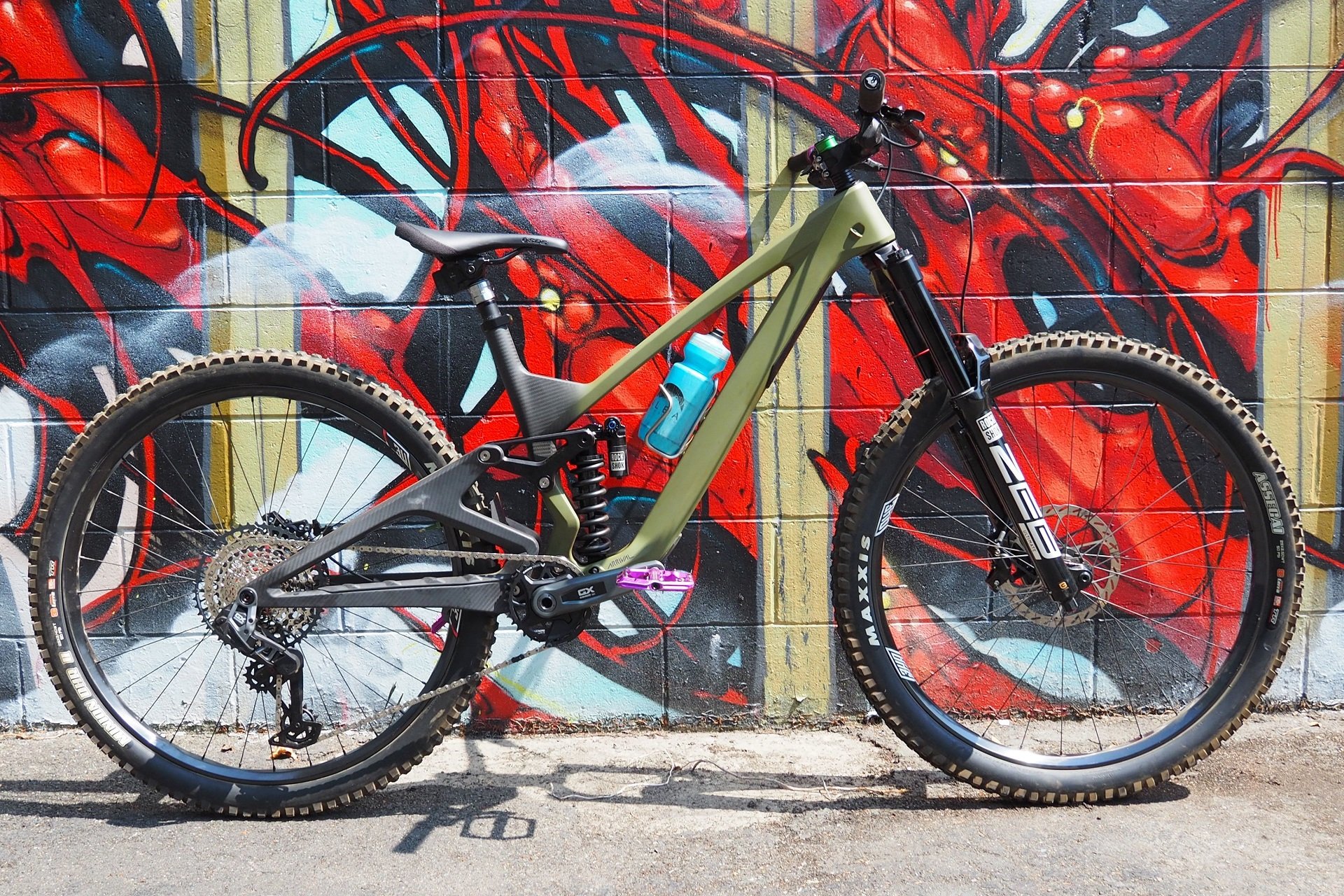
The A170 even looks fast standing still.
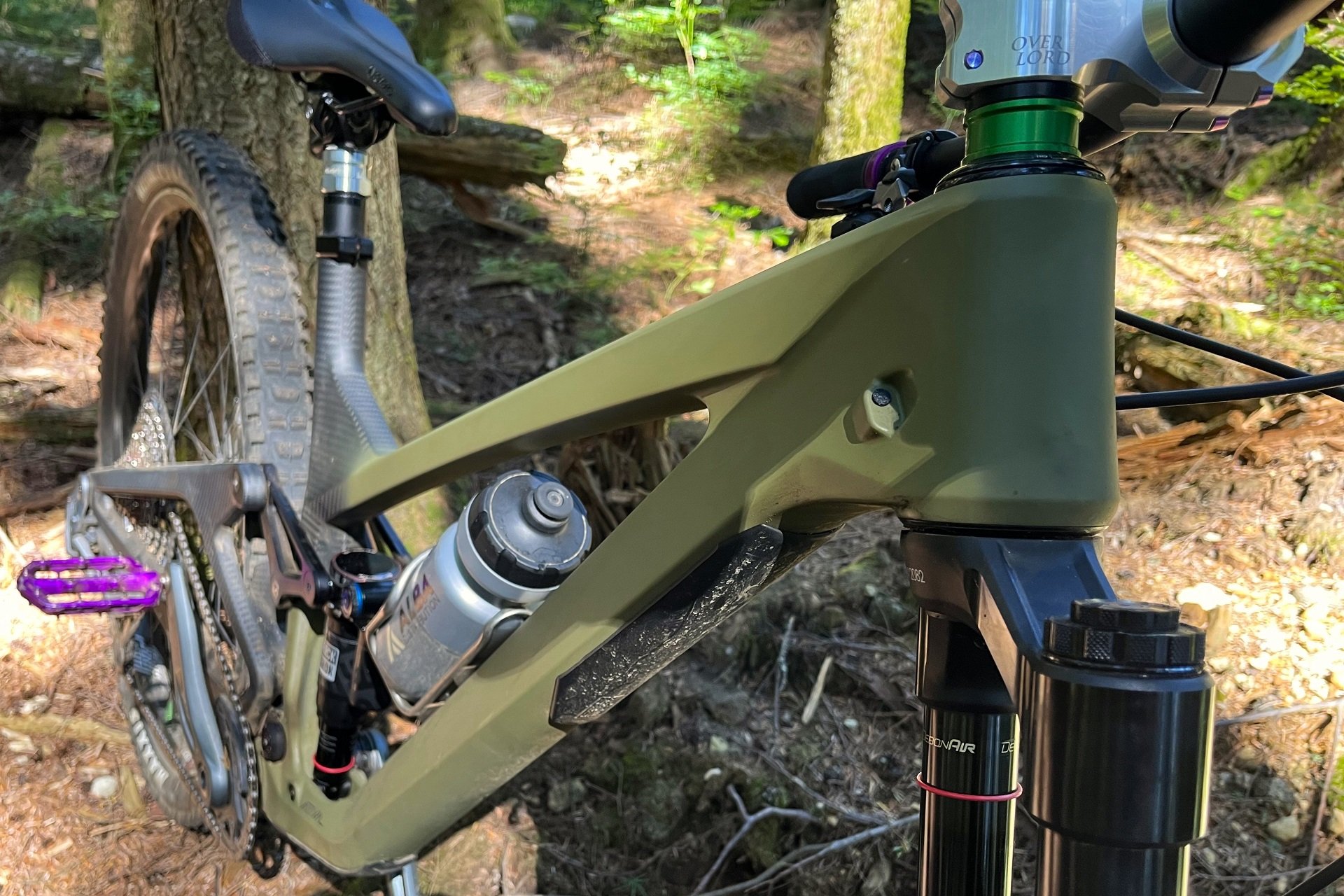
I attribute that to the unique lines of the Kamloops-made carbon frame.
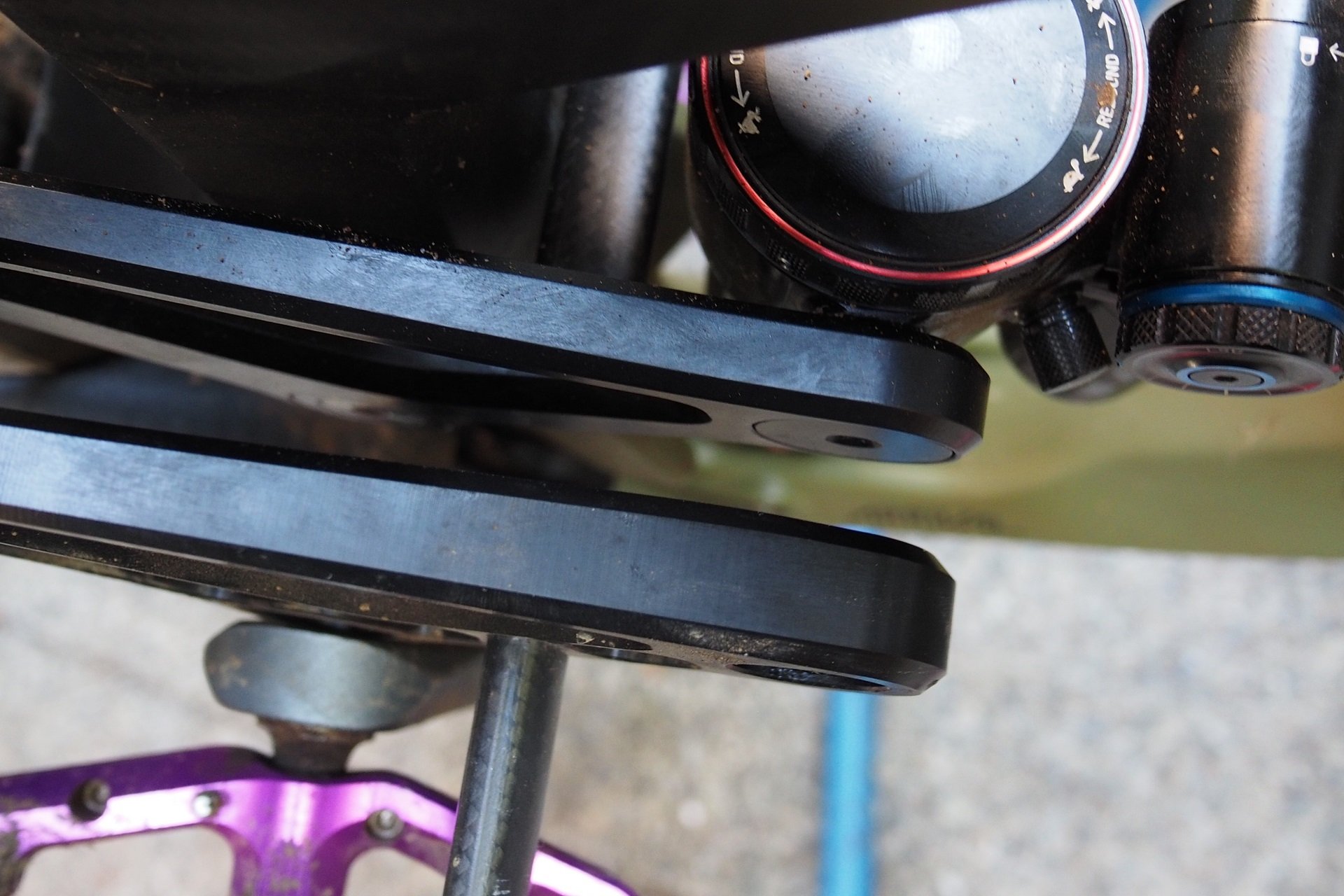
The A130/A140 has a thinner, lighter upper link compared to the A152 or A170.
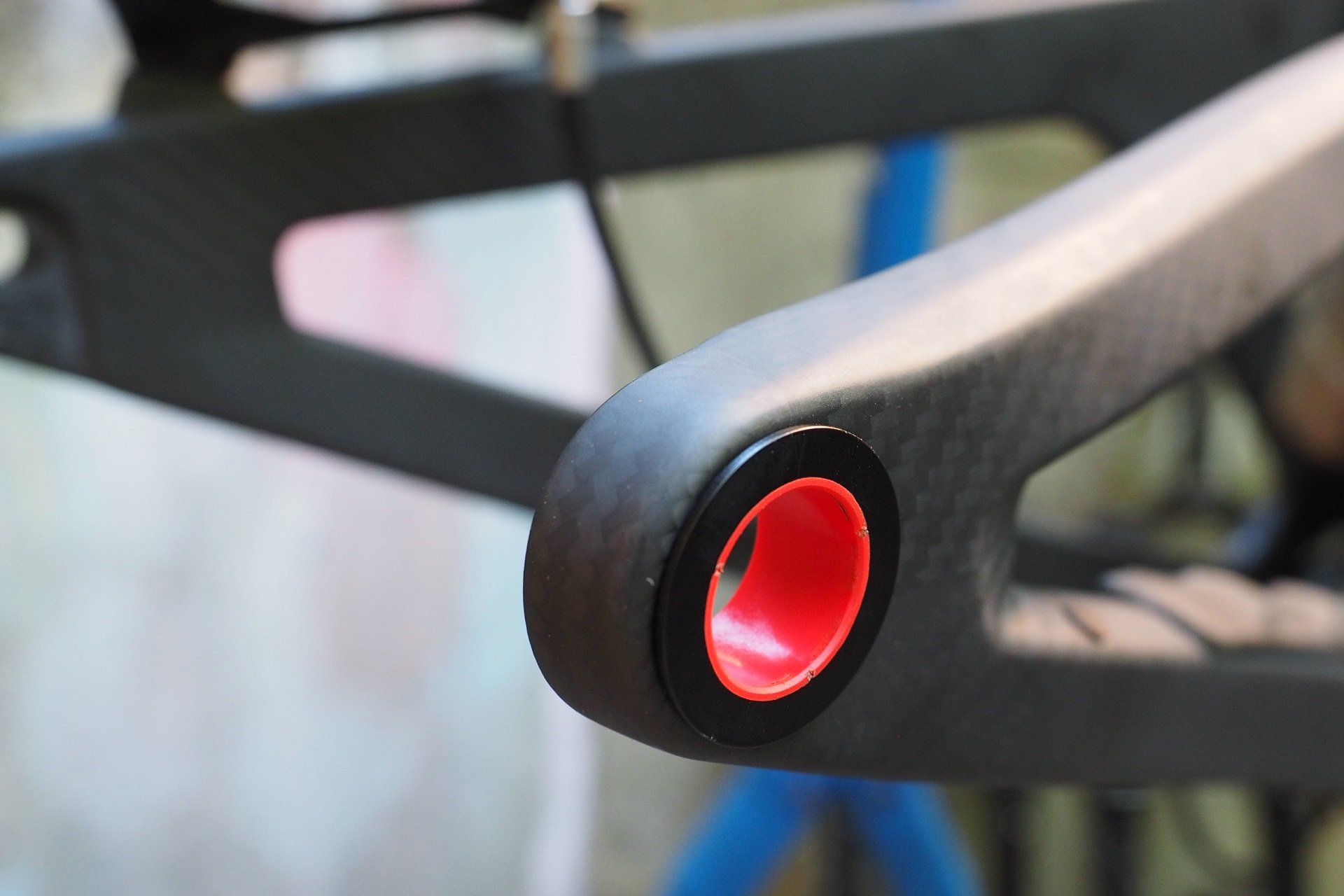
As expected, I didn't notice any difference in riding the old rear end versus the new UDH-compatible swingarm.
With that in mind, it may be surprising to hear that it didn't take many rides to figure out that the A170 wasn't the Arrival for me. At least not the way I had it built, and I'll talk more about that in a bit. Every Arrival wants to be pushed. Challenged. I found that the versions I could consistently ride out in front of were the A130 and A140 with a longer travel fork installed.
With the A152, I regularly found myself wanting when it came to the bike trying to achieve its desired speed while I fought it by riding the brakes. The A170 is much more forgiving, but it still wants to go faster than I want to go on the slower, jankier, North Shore trails that I prefer to ride. On faster black and blue trails it's a high-speed hoot, but on steeper jankier chess matches, I was fighting the bike too frequently.
I suppose this could be explained away by its nature as a bicycle born and bred for very different terrain. But I was infinitely more comfortable on the Arrival A140 with a 160mm Lyrik fork in these same situations because I almost always felt I could push that build up to the speed it wanted to be ridden at. I wasn't fighting myself or the mountain bike.
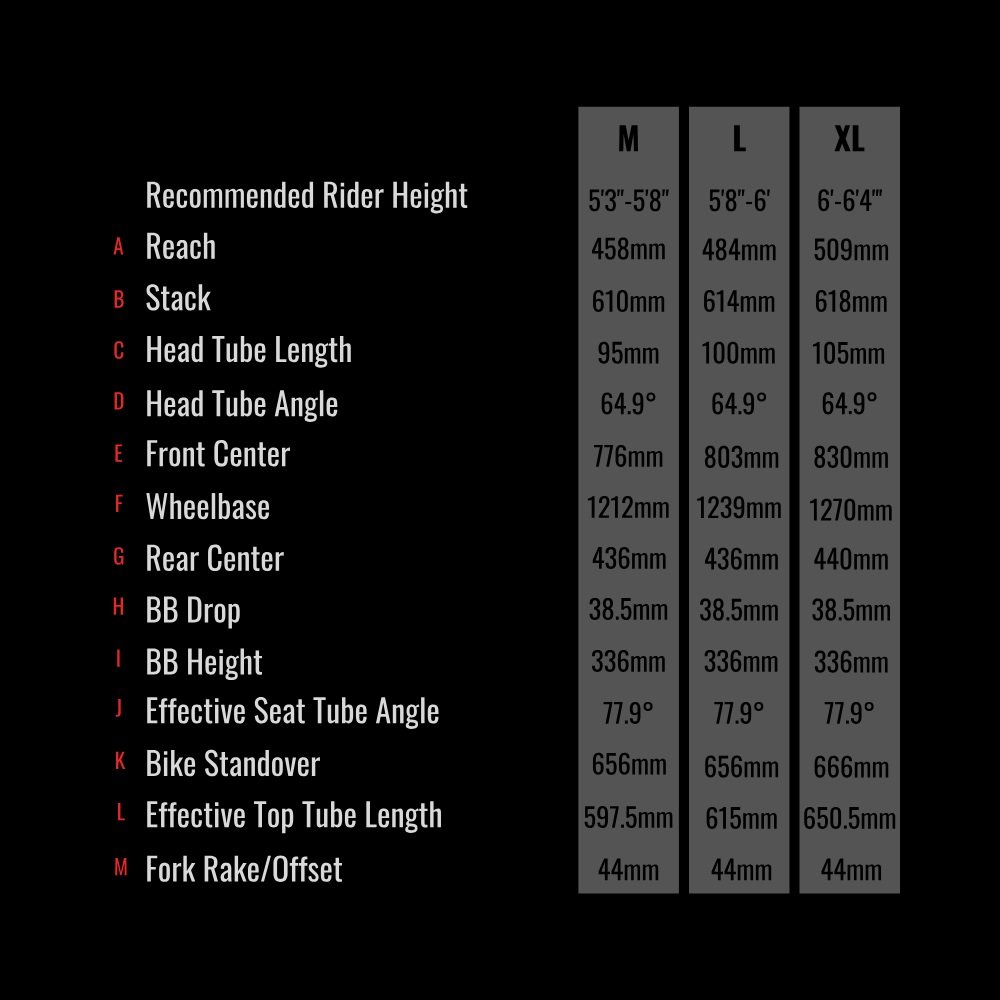
We Are One Arrival A130, with a 140mm fork.
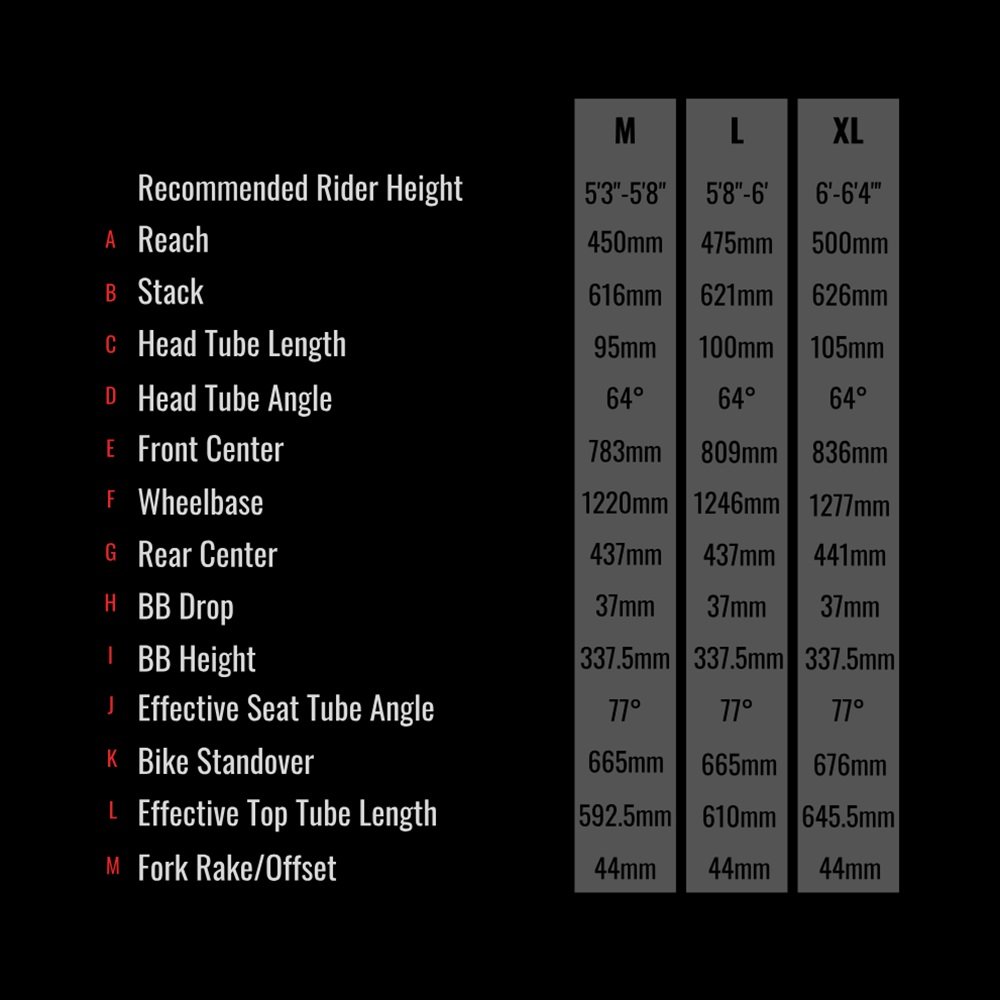
We Are One Arrival A152, with a 160mm fork.
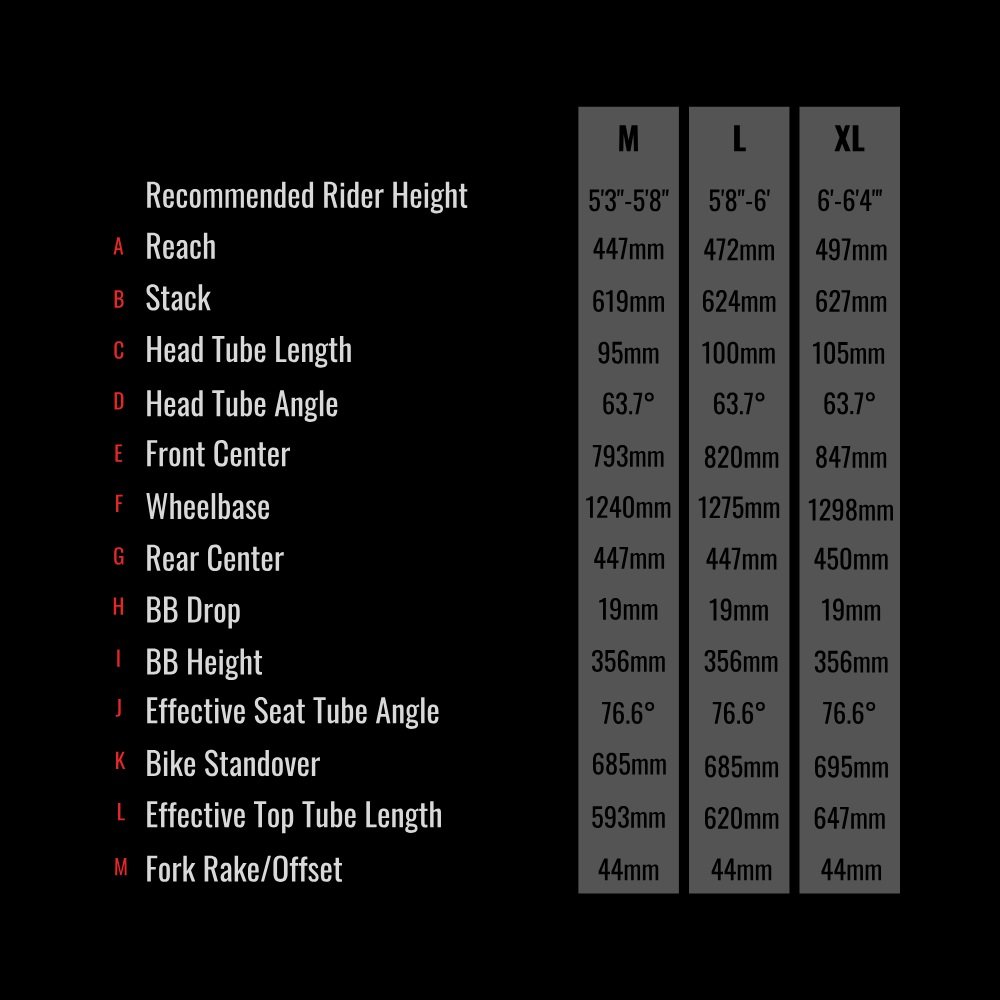
We Are One Arrival A170, with a 170mm fork.
...and back again
Usually, when I'm wrapping a review it's a bit of a whirlwind. I return the bike to its stock format by swapping out my own components. Then, before returning the bike, I ensure I've explored every detail I needed to see or otherwise evaluate. I submit the piece and then say goodbye.
The Arrival wasn't like that at all. After a handful of rides on the A170 build, I knew that I'd reached the end of this series. I built the bike back to stock, and dropped it at NSMB HQ. That was weeks ago. I've written a lot of stuff involving this bike, or these bikes depending on your perspective, and I needed the finality of giving the WeR1 back to percolate.
Related Content:
- Sept 15th, 22: We Are One Arrival SP1 First Look
- Oct 24th, 22: We Are One Arrival SP1 Short Term Review
- Nov 2nd, 22: Raising The Bar
- BREAK
- July 5th, 23: We Are One Arrival Updates: UDH & Mullet Inserts
- July 11th, 23: Transmission For (A Bit) Less - SRAM T-Types GX
- July 24th, 23: Manitou Mattoc Pro - First Impressions
- Aug 13th, 23: Game Of Forks
- Sept 18th, 23: We Are One Arrival A130 & A140
- Oct 22nd, 23: SRAM GX AXS Transmission (AKA T-Type) - The Update
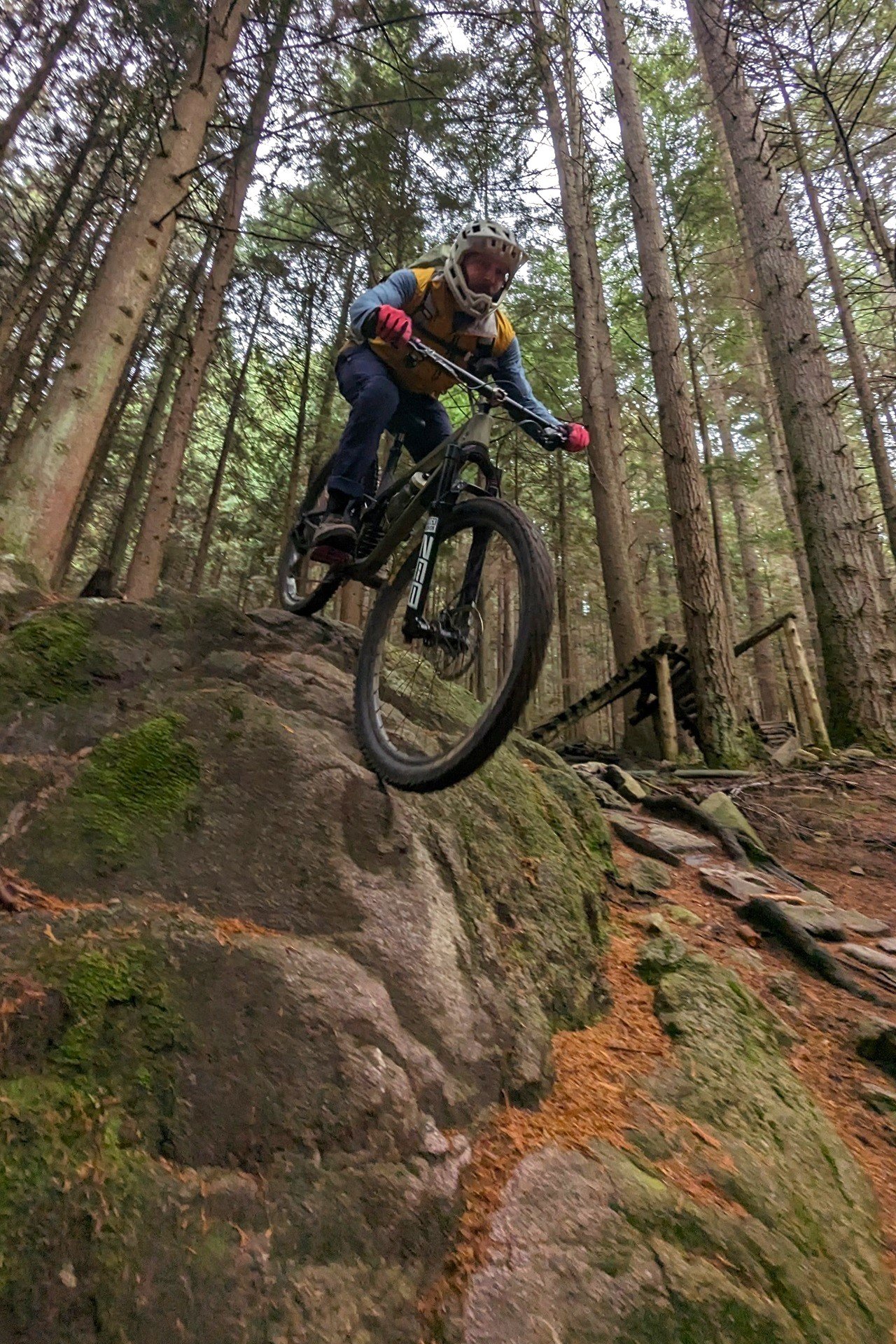
I tend to ride the same trails whether I'm on a 170mm sag wagon or my rigid single-speed. Photos - Jac
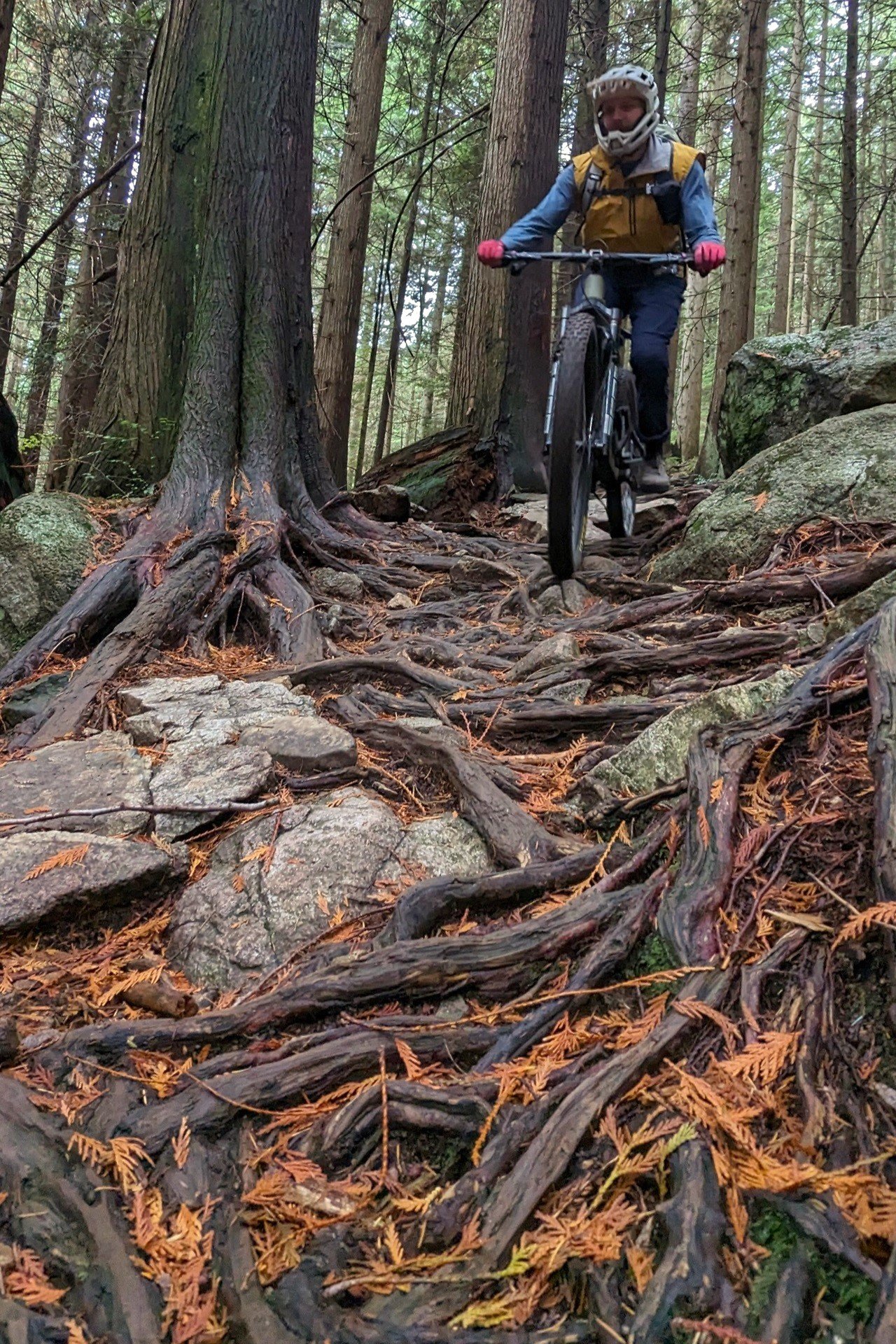
The A170mm eats bumps and delivers best of the bunch traction but it also wants to go, go, go.
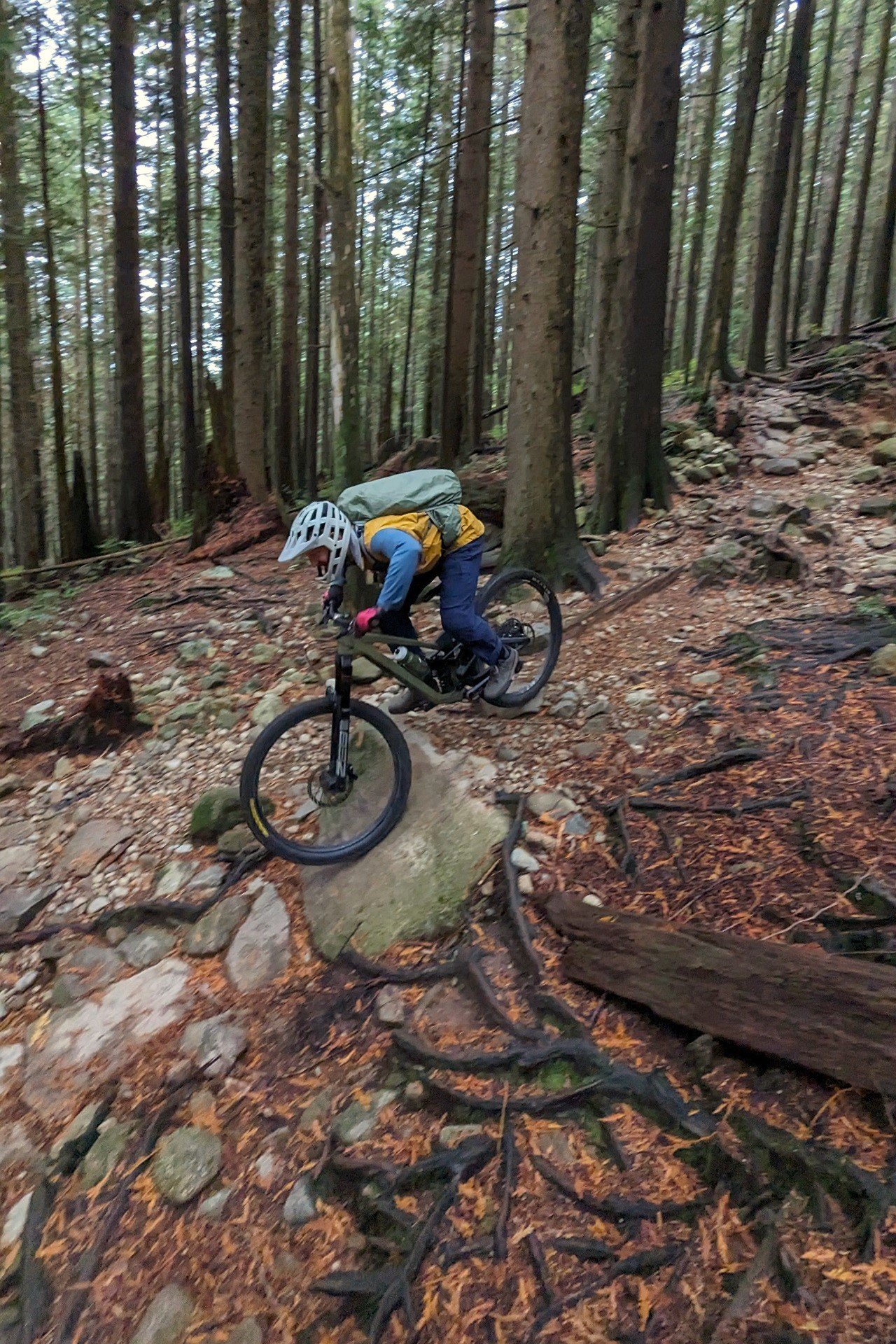
That's not to say this A170 wasn't a really fun bike, but overall I enjoyed my time on the A130 & A140 more.
Left Undone
This is not a complete review. There are a build options I would have loved to try but through access to parts, time, and a need to move on to other projects I didn't have the opportunity to pursue them.
Chief among my lamentations is that I didn't ride any version of the Arrival as a mullet. I had the mullet-friendly swingarm but no 27" rear wheel with Super Boost-157 rear spacing. All my bikes are Boost-148. This is too bad as I truly feel that with the smaller rear wheel, the A170 could have come alive for me.
Also, in the same vein as the 160/140 fork and rear shock travel on the A140 build I loved, I would have been very keen to try a 190mm Zeb on the front of the A170 build. I'm convinced that over-forking is always the answer when trails get steep and my weight is shifting forwards.
Finally, based on other riders' experiences, I would have liked to try an air shock on the A170. The Super Deluxe Coil is an excellent shock, but it would have been fun to play with a wider range of sag numbers.
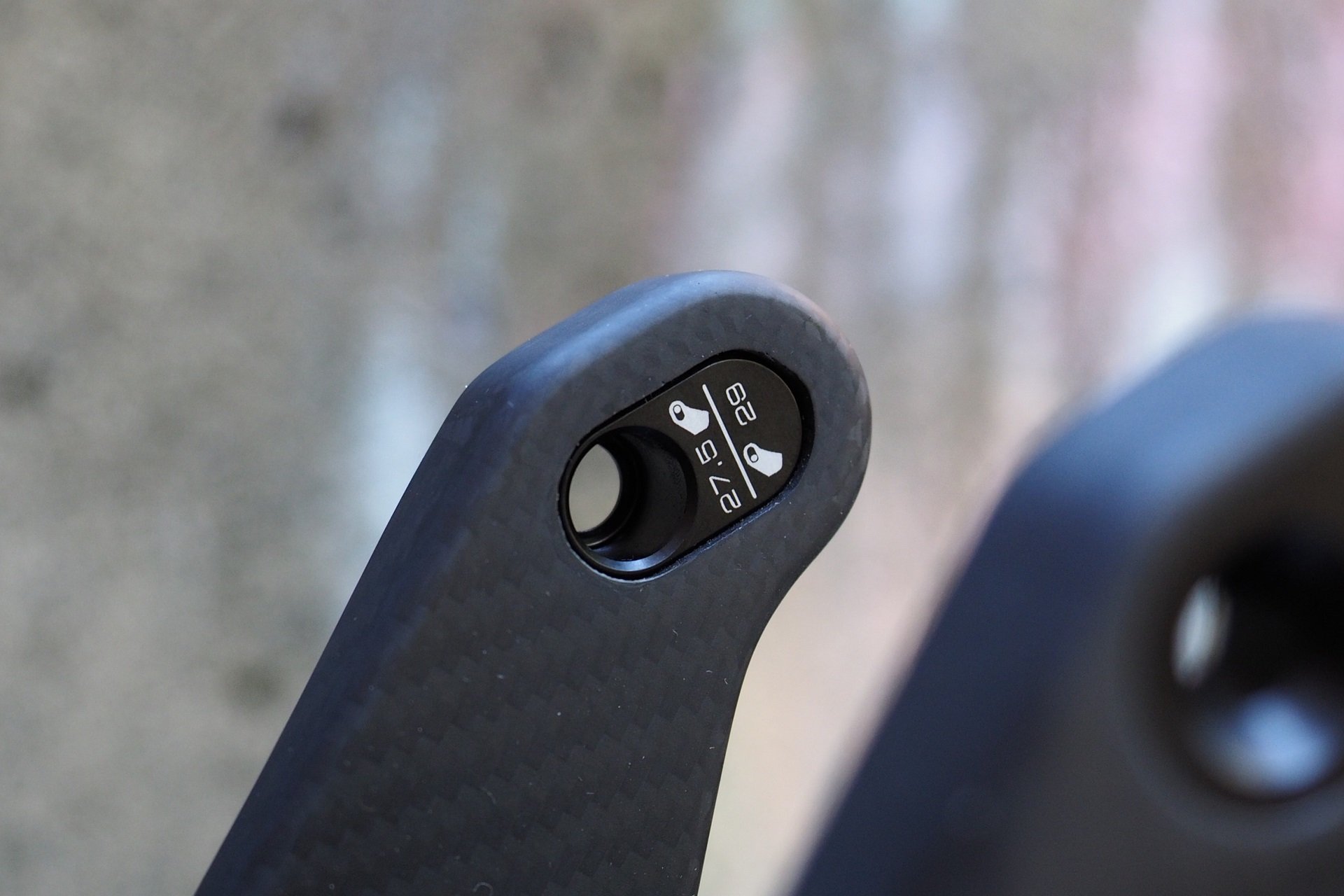
Many companies are putting their mullet flip chip at the lower shock mount, but WeR1 incorporates it into the swingarm/upper link interface.
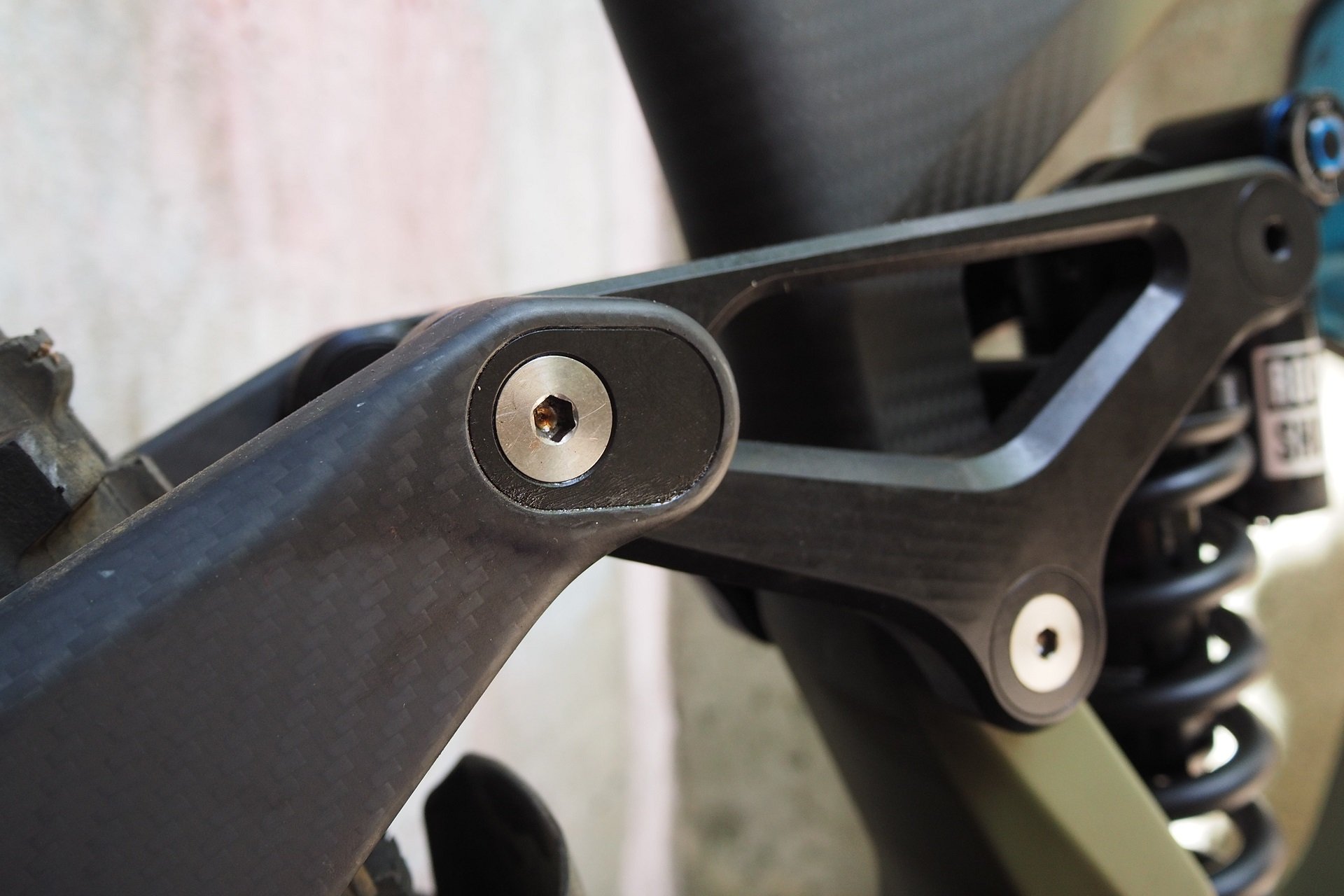
I didn't ride any Arrival version as a mullet but I would have been keen to try it in every version.
Bearing Services
Having overhauled a few of them now, I have to give credit to We Are One for the serviceability of their design. There are very few full suspension bikes that are nicer or easier to do a full-bearing swap. All the bearings are housed in the frame linkages themselves and they're relatively very easy to remove and install.
WeR1 uses a combination of 6901 MAX and double-row 3901 MAX bearings. As someone riding a bike well above my budget here, I'm inclined to warn the prospective buyer that 3901 bearings are not inexpensive. But, if you can afford a 10K+ CAD mountain bicycle then 37 CAD+ per bearing is probably not a big concern. They appear to last a long time thanks to solid shielding on WeR1's part.
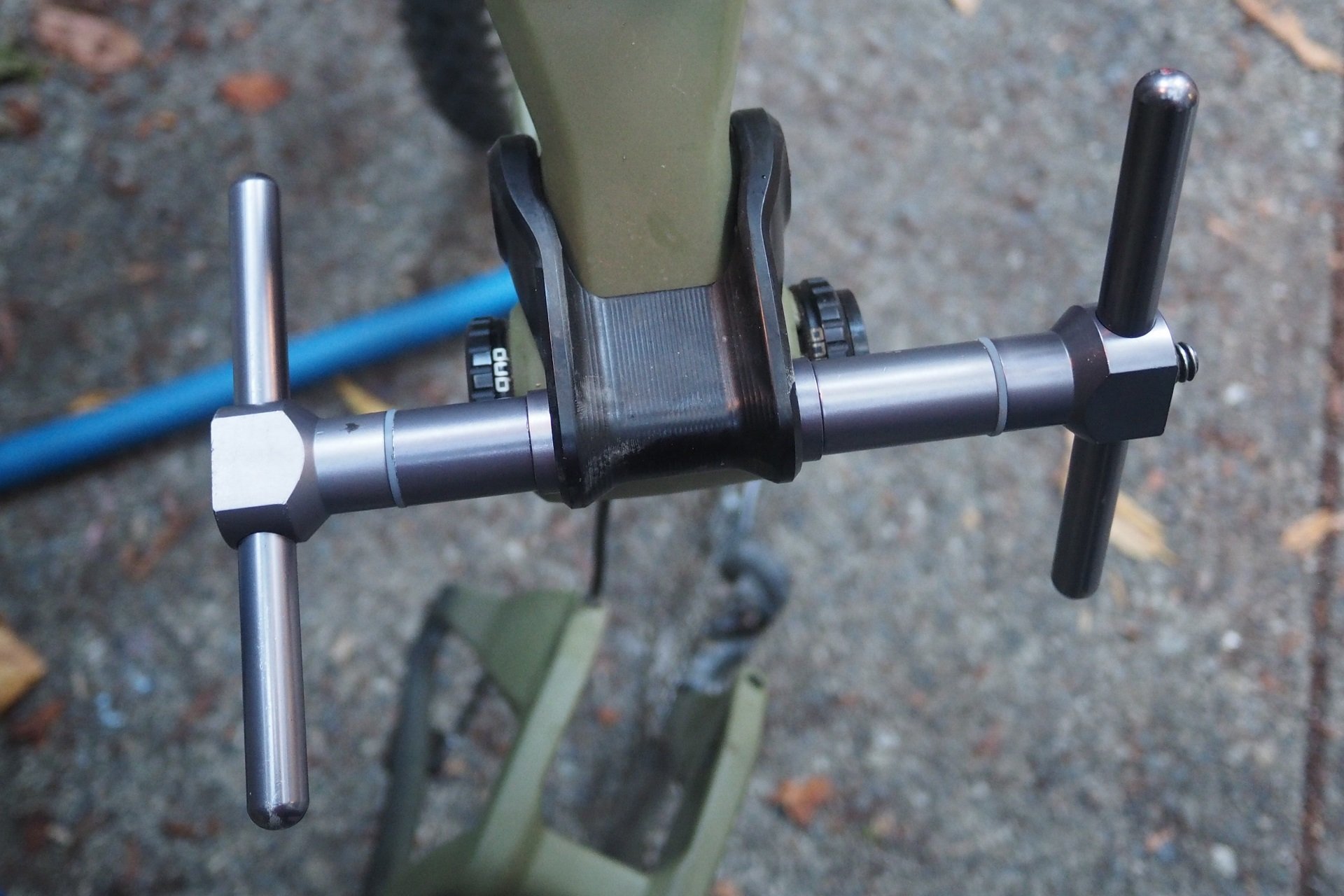
This photo is actually from chasing a creak that WeR1 later diagnosed as being a loose air can on the rear shock.
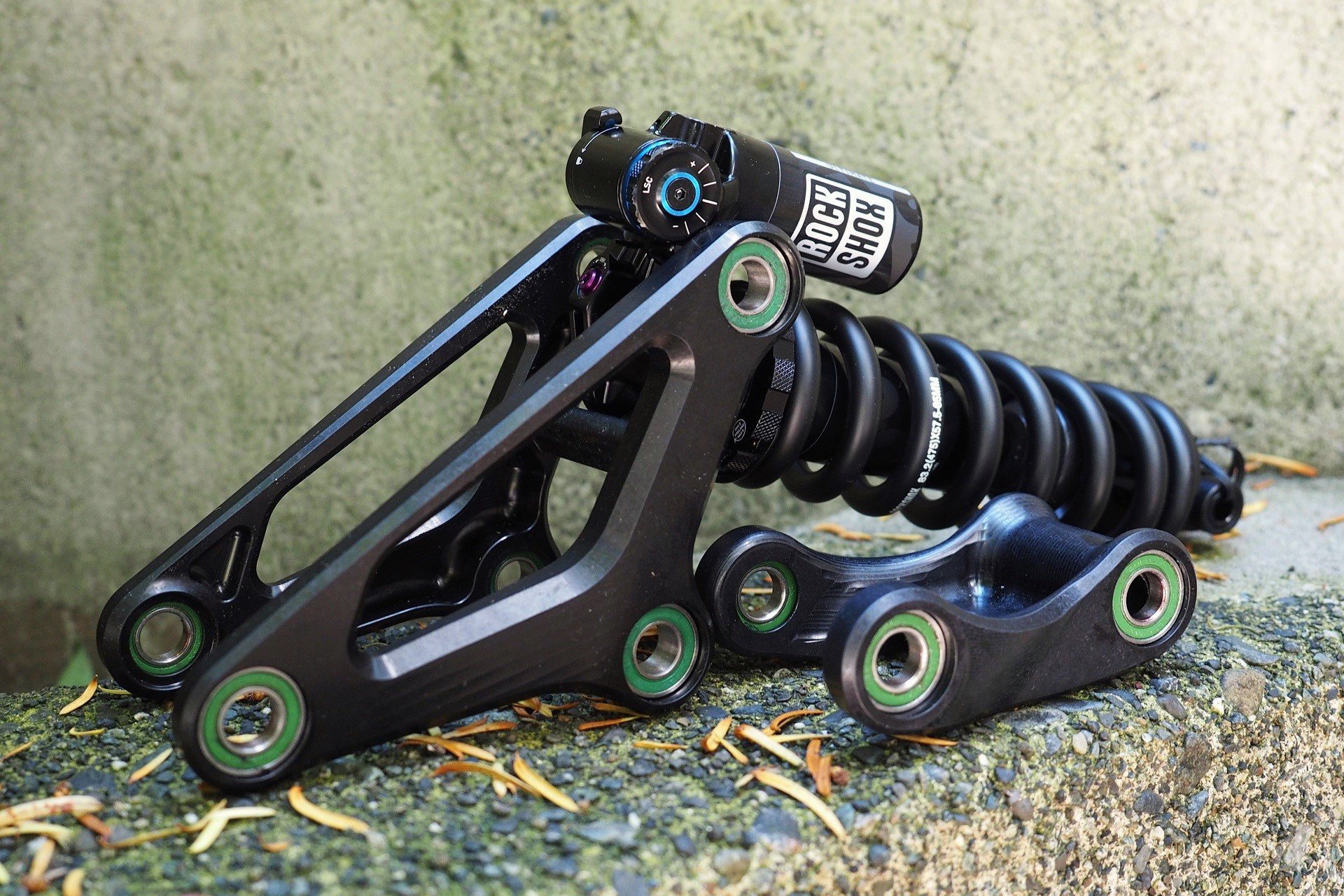
I love that all the bearings are housed in aluminum links. It makes it much easier to access for service and replacement.
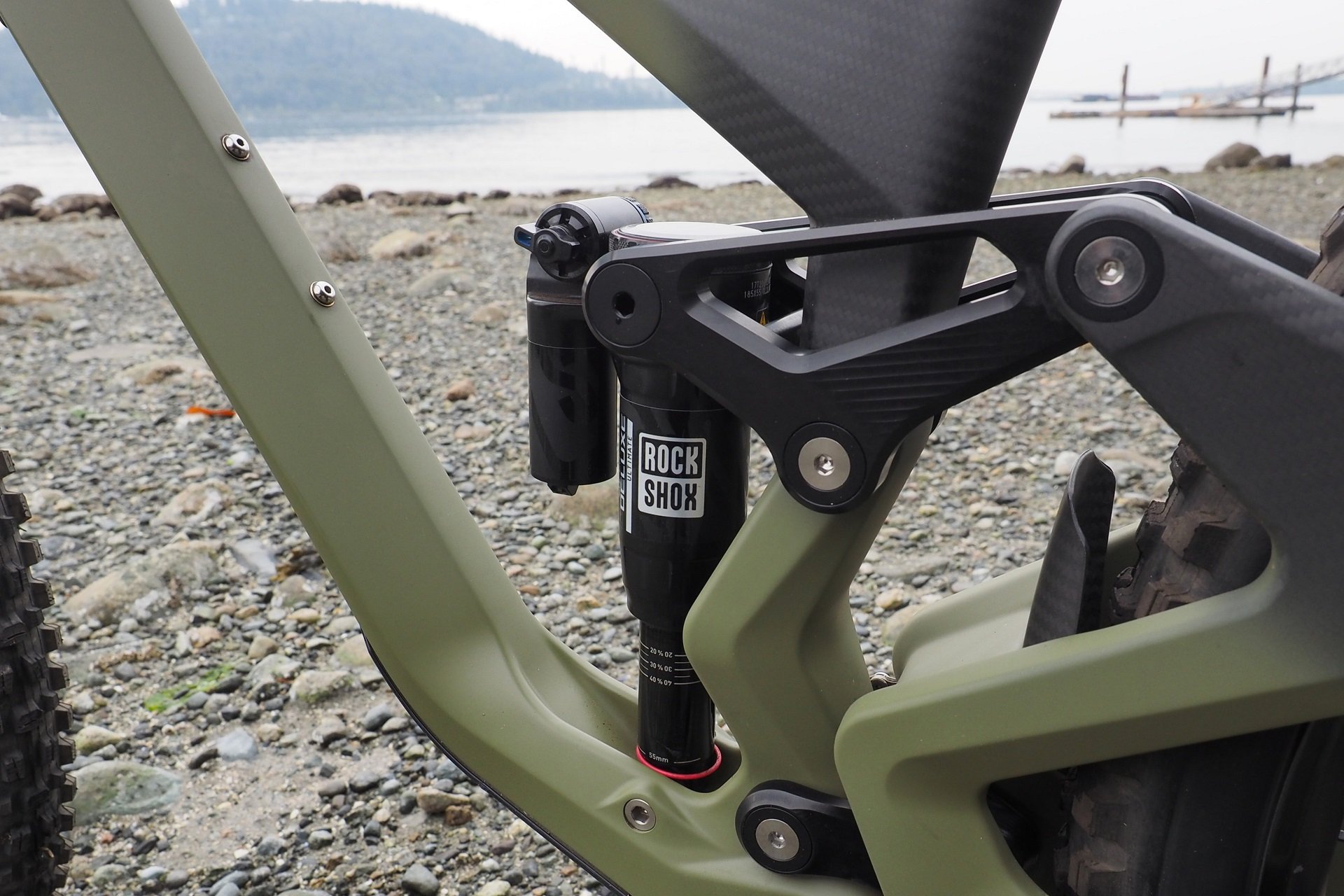
The bearings are well shielded and folks I know with Arrivals are getting remarkable duration between services.
Room To Improve
Cable routing, or not. The rear brake routing on the WeR1 seems like an afterthought and I'm not a fan of the process to change brakes on these bikes. Mind you, this is a complaint that's entirely related to fishing the line through the rear triangle, which I don't think would be that difficult to clean up.
For how infrequently it needs to be done, I'm fine with having to drop the fork to swap cables in the front triangle. I've run into way too many tube-in-tube bikes lately with so much crap inside the frames that forcing them to release cable housing and brake hoses was a Herculean task.
I'd still prefer clean external routing, but since that isn't going to happen I could be good with the Arrival's internal routing if the rear triangle was made more direct and the transition between front and rear triangle was cleaner.
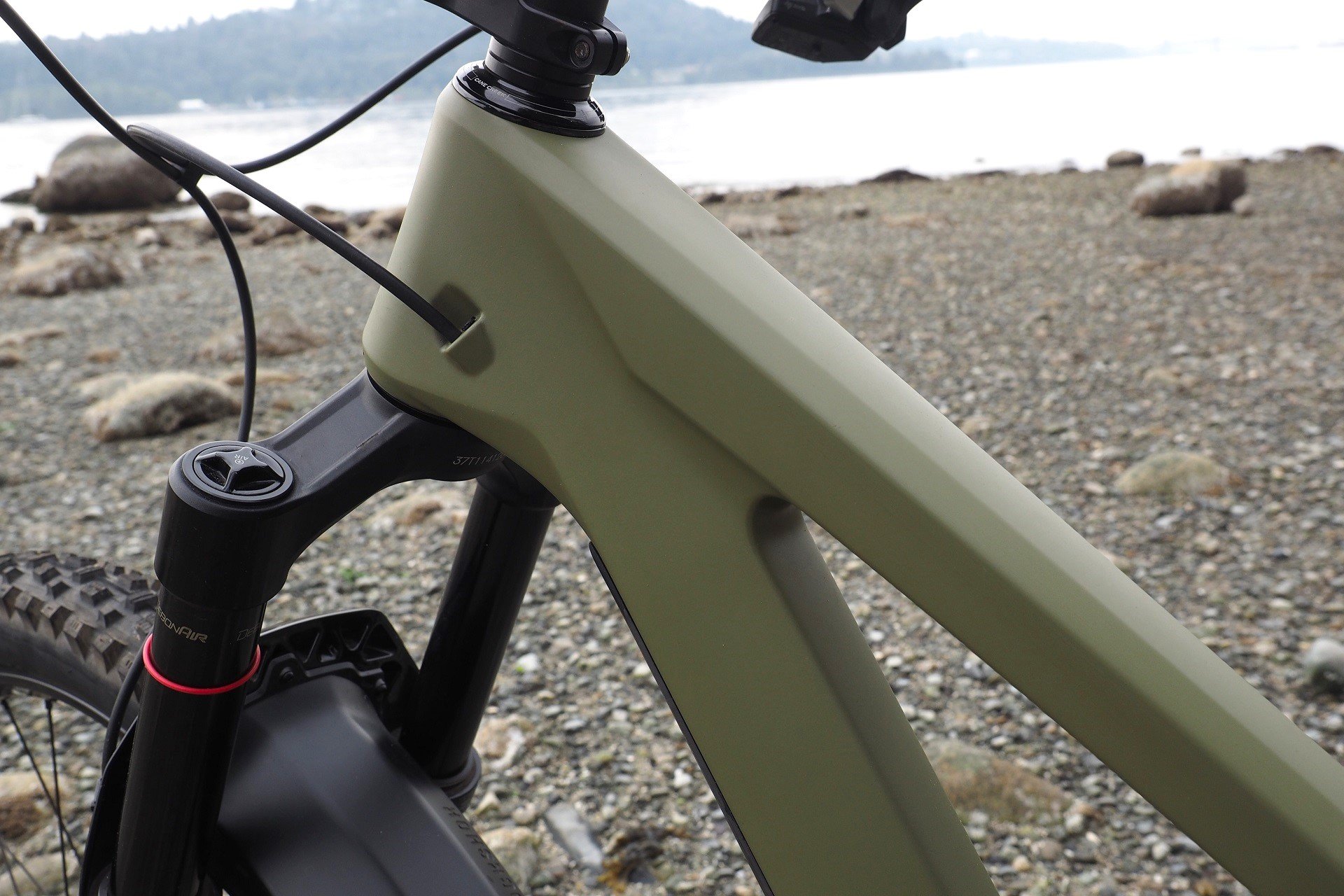
Changing the brake requires dropping the fork but I don't find that to be such a big deal for how seldom it needs to be done.
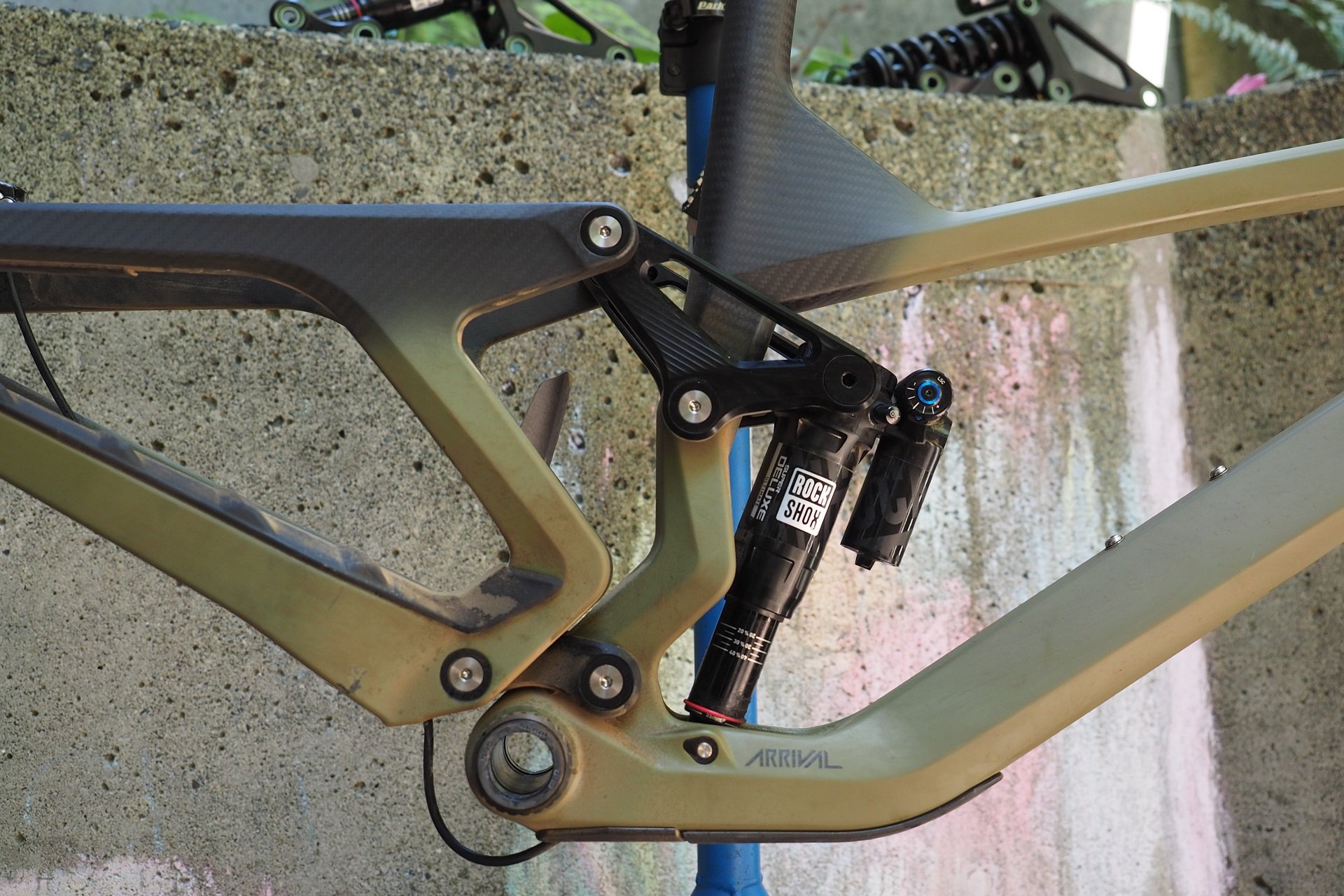
If WeR1 could get rid of this funny housing loop between the front and rear triangles I'd be happy with their routing rather than tube-in-tube.
Super Boosted
My mountain bikes are both Boost 148 and I'm still ranting at clouds that there was really no reason to move away from 142x12mm rear hub spacing. But in a world of 55mm chainlines, I'll maintain that we're on the cusp of Super Boost 157 becoming the most common rear hub standard. It's only going to take one big player - Trek, Specialized, the Pon stars - to make the switch and we'll see everyone get in line shortly after.
To be clear, I'm not advocating for SB 157. It just makes a lot more sense as every bike designer jumps on the frame packaging benefits of the wider chainline that SRAM is pushing with Transmission. Bicycle-King-for-a-day-Andrew is still switching us all back to narrower rear ends but the reality is that what We Are One is doing with the Arrival is the best way to achieve better efficiency and chain life in those high-torque, most inboard, climbing gears.
Simply put, SB 157 with a 55mm chainline is better than Boost 148 with a 55mm chainline. 55mm chainlines aren't going anywhere, so I'd guess We Are One is ahead of the curve with their SB 157 spec.
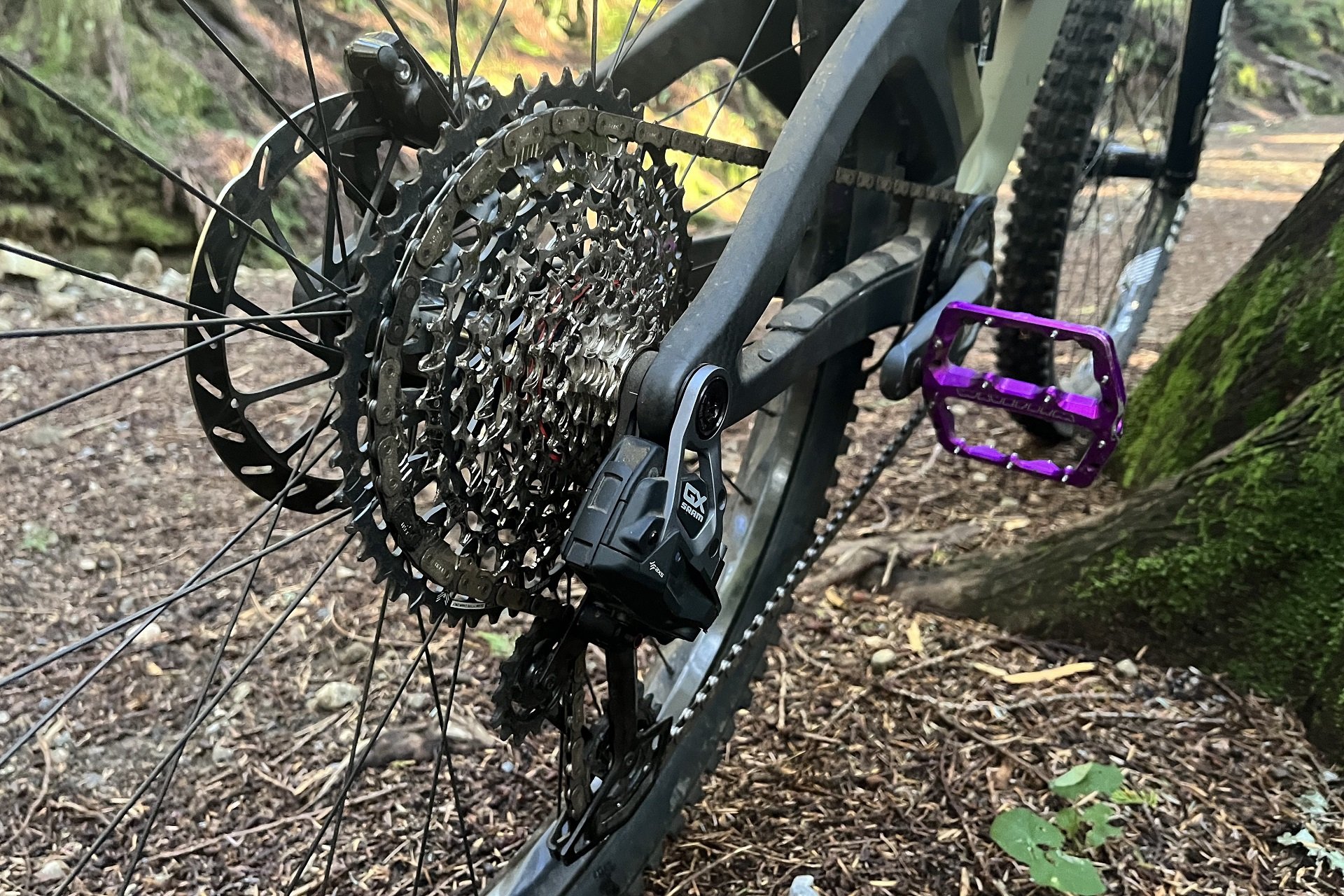
The original Arrival combined Super Boost 157 rear spacing with a 52mm Boost chain ring spacing to deliver an improved chainline in those pizza-sized low gears.
"When I get to the bottom
I go back to the top of the slide
Where I stop and I turn and I go for a ride
'Til I get to the bottom and I see you again
Yeah, yeah, yeah, ha-ha-ha!" -Helter Skelter, The Beatles
Andrew's A140
As stated, I've never ridden a non-DH bike that wanted to go faster than We Are One's Arrival A170. But, I have ridden faster on other non-DH bikes. Bikes that are easier to ride, more forgiving if you will. The Arrivals all want to be pushed and where the A170 is much more gentle than the A152, I only ever felt fully in command going fast on fast trails. Trying to go fast on slow trails wasn't that fun.
I recognize that when it comes to riding bikes I'm a bit of a plunker, and when plunking down my favourite janky trails there were too many times that the A170 wanted to go faster, and I was quite content at the speed we were going, thank you very much.
In this regard, I feel most at home with the Arrival series riding both the A130 and A140 models, named for their respective rear travel numbers. I can genuinely feel like I'm shredding these bikes the way WeR1 intended and my edge and the bikes' edge are aligned more closely compared to the longer travel versions.
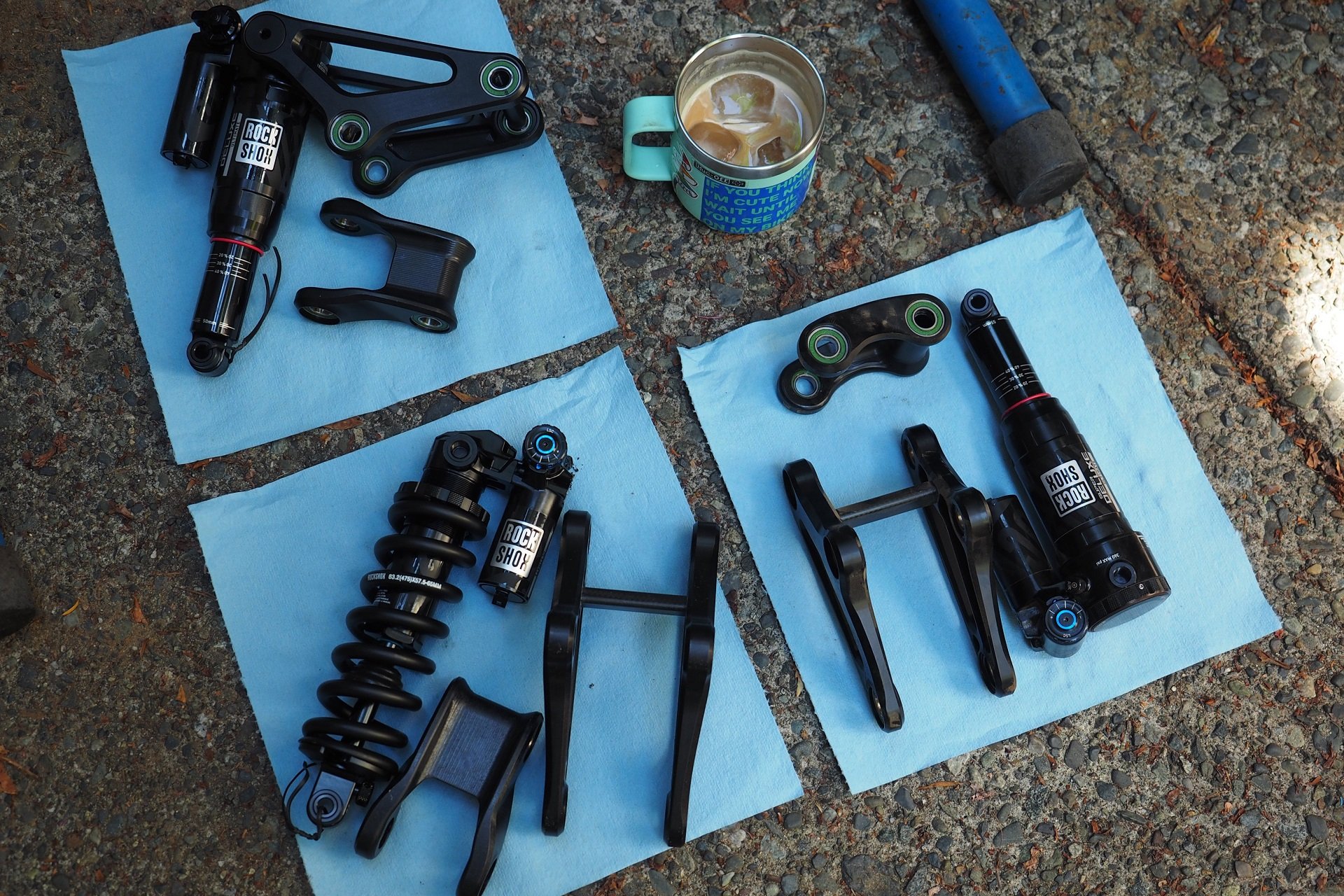
As a bike nerd, I very much enjoyed riding all the different versions of the Arrival.
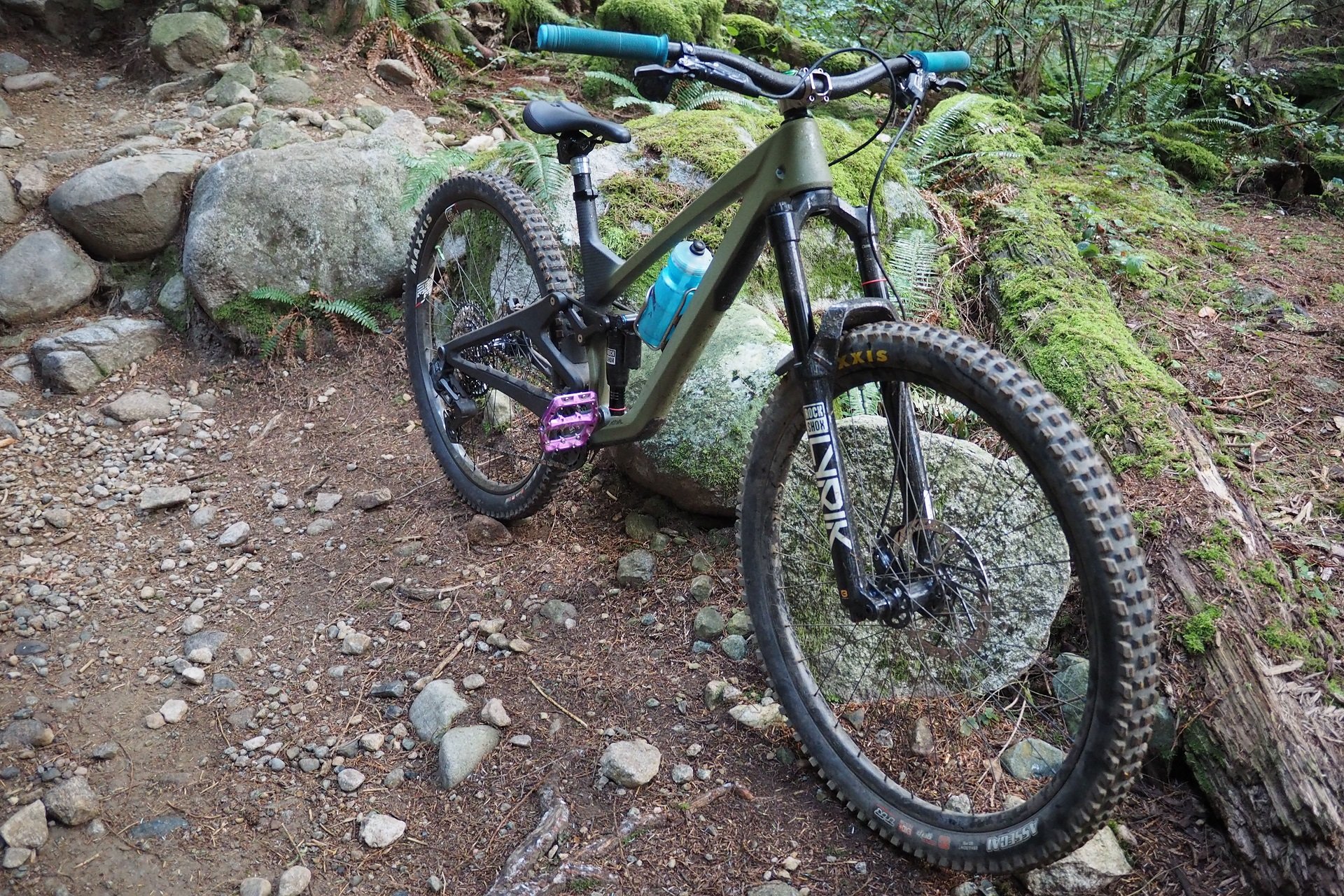
The A140 with a 160mm travel fork is the setup for me though.
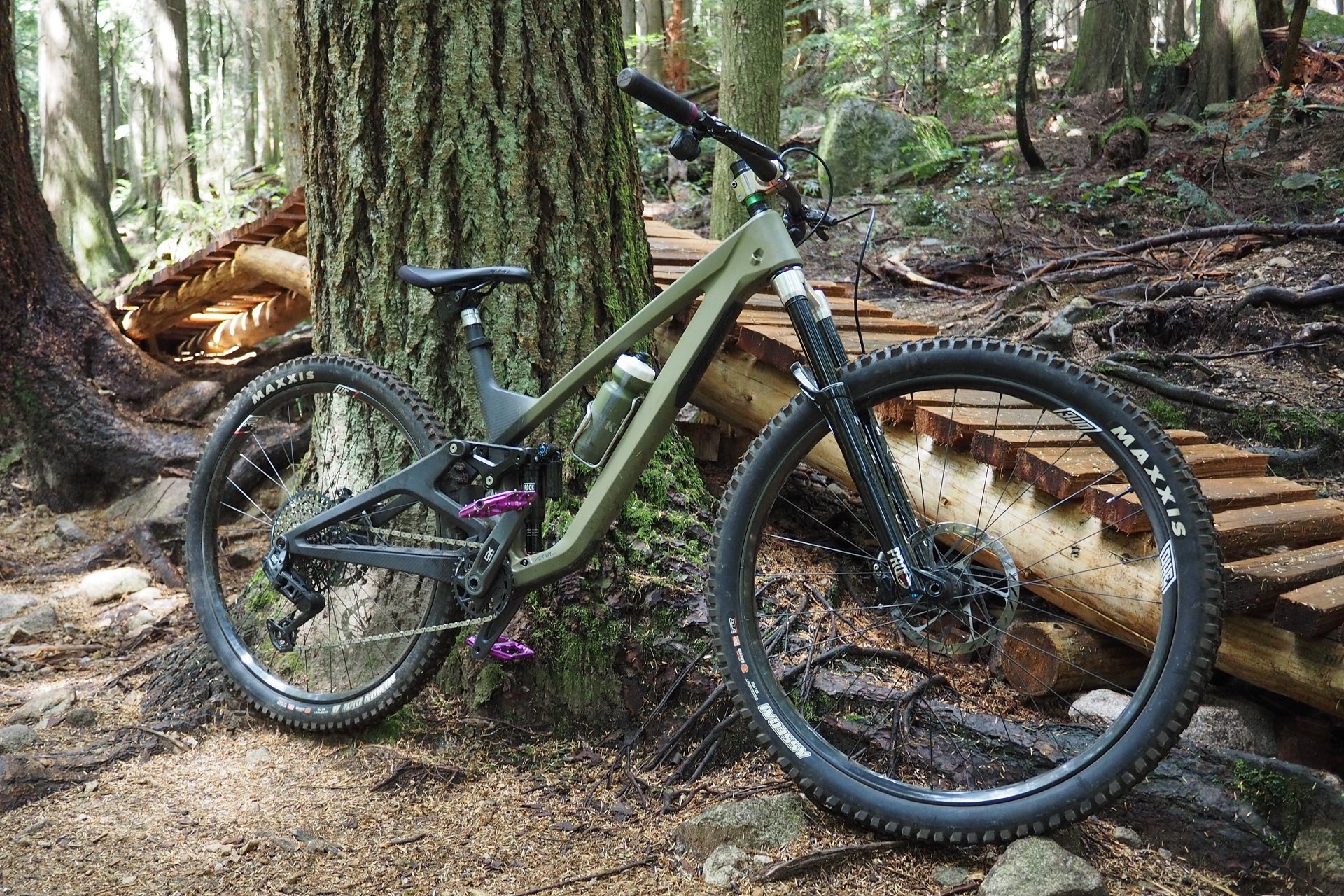
The A130 with a 140mm Mattoc Pro was a close second.
If I was buying an Arrival, it would certainly be an over-shocked A130, aka A140, and I'd likely split the difference and run a beefy 150mm fork that could be easily and cheaply bumped up to 160mm. A Cane Creek Helm or Manitou Mezzer would both be easy choices. I'm positive I'd end up riding the bike as a mullet.
After riding every version though, the A170 is probably the version that most folks would love in many places. It gives up so little on the climbs compared to the other Arrival models and delivers as much speed as you're willing to let it on the descents. Whether it's places with faster, less janky, trails or riders with more go-go-go than myself, the A170 has the most potential to rip.
For more information, here's the We Are One Arrival collection.
Height - Steve Buscemi-ish
Wait - Patiently
Ape Index - T-Rex
Age - The same as DOS
Favourite Trail(s) every week - Pipeline (thank you Ken!) to Lower Crippler (thank you Andy!)
Favourite Song(s) this week - I'm Your Man. Nick Cave (covering Leonard Cohen)
Favourite Colour - Cosmic Lilac
Bar Width - It depends
Reach & Stack & ETT - It depends
Crank Length - 175mm except when it's 170mm
Wheel Size - Hot For Mullets
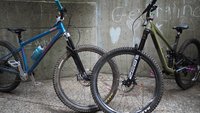
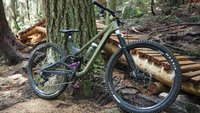
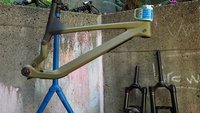
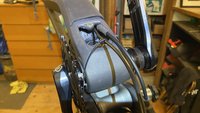
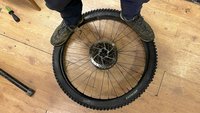

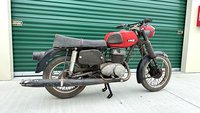



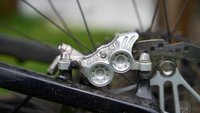
Comments
Vik Banerjee
5 months, 1 week ago
"148mm what is this? A hub for ants!!" - DZ
Thanks for the comprehensive reviews on the WA1 frame. I'd probably go 150mm fork and 130 rear travel if I got one. I'd rather ride a "slow" bike fast than a "fast" bike slow. Less likely to end with me regaining concsiousness in the ER.
Reply
Andrew Major
5 months, 1 week ago
Hahaha, yes. Thank you for this.
.
“I'd rather ride a "slow" bike fast than a "fast" bike slow. Less likely to end with me regaining consciousness in the ER.”
And I (at least) find it more fun!
A130 to A140 just being a shock stroke difference (same geo with same sag amount / not sag %), it was a nice little bonus when I needed it. Both great options though (and relatively cheap and easy to try both ways).
Reply
Vik Banerjee
5 months, 1 week ago
My FS bike feels like a giant monster truck when I ride it these days. It gives me Rampage vibes, but it's only a 160mm fork and 140mm rear travel rig. That's not even ENDURO Bro! It's definitely more fun for me to ride a bike closer to its performance limits and there is no trail feature I can think of that I'd huck myself down on any bike that I wouldn't be comfortable doing so on my existing 140mm machine. So my brain doesn't really think too hard about longer travel bikes.
It is nice that the WA1 frame allows for so much configuration swapping should the owner be so inclined.
Reply
fartymarty
5 months, 1 week ago
Going back to P116 of MEATengines thread I also am tending towards a shorter travel bike (HT) to keep me out of trouble.
Andrew - thanks for being honest with this review. It makes a lot of sense.
Reply
Andrew Major
5 months, 1 week ago
“honest”
Cheers, Marty.
This word is my pet peeve with reviews, but I think I know what you’re saying.
I once described the Arrival (all travel varieties- it’s one bike!) to a prospective WeR1 customer I met on the trail as being amazing because it’s not for everyone.
I think for folks who get that, want that, and can afford it, this bike (any travel) will be at the top of their list.
It’s not mass-produced. It doesn’t have to serve every one.
Reply
fartymarty
5 months, 1 week ago
Honest - no bullshit, straight talking, not spewing marketing copy, quality writing I love NSMB for.
I get the bike. I reckon on a good day I would get on well with it but good days don't happen every ride. Therefore happy to settle for something a little more well rounded and less pointy.
140 29HT is my "Lagom" bike.
Andrew Major
5 months, 1 week ago
“I get the bike. I reckon on a good day I would get on well with it”
Totally.
Cheers!
Andrew Major
5 months, 1 week ago
Relativity! Crazy how long travel my 140mm-forked El Roy hardtail feels after a few days on the rigid bike.
Same story with single-speed versus multi-speed. I was accused the other day of being a poor candidate to test Shimano LinkGlide because I rarely if ever use the easiest gears… *sigh*
Reply
Karl Fitzpatrick
5 months, 1 week ago
This is basically the reason I (and imagine, you) still mostly ride a hardtail.
I don't need to be going Mach Stupid to feel like I am.
On a crazy capable bike, you need to wring it out for all its worth which always brings to mind a (automobile) speeding campaign slogan the NZ govt paid for years ago:
"The faster you go, the bigger the mess".
Reply
Andrew Major
5 months, 1 week ago
“The faster you go, the bigger the mess".
So good.
And yeah, summed up, I’m willing to pay the bills for what the A130/A140 pulls me into but not the longer rigs.
.
Years ago a guy I was riding with ate amazing Macy’s-4th-of-July level shit riding his Intense DH rig on a trail we regularly rode on hardtails.
On the hike out he said: “I thought I’d brought a get out of jail free card, but it turns out I’m going away for longer.”
It was really funny in the moment.
Reply
Carmel
5 months, 1 week ago
As a PON bike brand employee "the PON stars" got me chuckling. I hope Super Boost everything is still a few years out.
Reply
Andrew Major
5 months, 1 week ago
Hahahaha. Cheers for picking that out!
.
I’m still hoping that narrower rear ends becomes the hot trend and 142 comes roaring back.
We have giants raving about riding kids’ length crankarms and straight-up seat tube angles murdering knees anywhere (and everywhere) without walls for climbs, so anything is possible.
Reply
Bro-Tato
5 months, 1 week ago
Have any actual tall folks reviewed these frames? Beautiful music plays in my head when I read about the performance, but the ugly record scratch sound comes when I see those (very) low stack numbers. At 6'2" with average arm length, and a 820cm saddle height on 165mm cranks, I'm fairly sure if I bought an Arrival I will end up with either 4cm of spacers under the stem, or a riding position that is cantilevered over like I'm getting ready to win a XC world cup. Which just isn't what you want in a bike like this.
I am really curious to know how that plays out in the real world.
Reply
Andrew Major
5 months, 1 week ago
I’m not tall, so I can’t comment on specific fit beyond noting that higher rise bars (50mm+) are increasingly common and WeR1 said they feel it’s easier for folks to get higher than lower in terms of fitting the most riders.
Lower and wider bar setups (along with shorter reach and stack numbers achieved by sizing down frames) are - without a touch of joking/humour - the next trend in mountain biking. So at 6’2” and looking to be on with-it, choosing between a Large and an XL is probably a bigger worry than Stack.
Reply
Bro-Tato
5 months, 1 week ago
Why is lower stack the trend? Based on what you are saying, it seems like the goal is to enable shorter folks to size up hugely if they so desire? Santa Cruz at least seems to disagree.
I will say I sold a XL Spire (637 stack) in part because of this - to get the fit right, I had to run 40mm riser bars with 3cm of spacers under the stem. Effective reach decreased correspondingly, and it looked wonky.
And you're right about the L vs. XL dilemma, but that's also about stack - I would have sized down that same Spire, and stuck with it, but then the stack would have been even more inappropriate.
Reply
Andrew Major
5 months, 1 week ago
“Why is lower stack the trend?”
The coming trend.
.
I’m the worst person writing about mountain bikes anywhere to be commenting on the “why” of anything trendy.
See my attempts at humour related to short cranks at SSSTAs (super steep seat tube angles).
See my rigid single-speed and friction shifting content.
For the record - 5’9” with a T-Rex ape index - I really enjoyed the large Arrival with a shortish stem, mid-rise bar and some headset spacers. I thought the STA was pretty much perfect for hitting most riders preferences via fore-aft saddle adjustment too.
.
Anyway, I don’t know anything about anything, but if we were having a coffee or a beer and you asked me then I’d suggest that Enduro racing is dead and DH racing is pounding back to predominancy in terms of where riders are taking setup inspiration from.
Look at the Reach numbers on DH bikes and go from there.
If we were taking the conversation further I’d guess that soon ‘everyone’ will be talking about longer rear centers and increased fork offsets too.
Don’t worry though, we won’t go back to 51mm. I’ll hedge on 56mm for long travel bikes with 29” front wheels.
Anyway, again, I’m just the rigid single-speed guy. But I’d love to come back to this in a year.
Reply
Bro-Tato
5 months, 1 week ago
OK, yes, you're right. Asking "why" in any question of geometry trends and the answer is usually "because it needs to be different than it was before." Because this is a business, dammit. :)
Reply
Andrew Major
5 months, 1 week ago
But there-in rests the real question! Does the business drive the fashion or does the fashion drive the business?
I’m increasingly convinced that most bike design is just packaging what folks want (or are going to want, or think they want) into a machine that’s actually rideable.
Like the new CaneCreek shock that finally combines riders’ desire for coil shocks with their expectations of end stroke tuneability. It’s essentially a coil shock with volume spacers.
I wonder many things - for example, will the longer rear center trend lead to higher bottom brackets or will the shorter crank trend lead to lower bottom brackets or will they cancel each other out? - but not whether we’re going to see big changes like we did after 08/09.
Paired chainstay and Reach numbers (e.g. 470mm/470mm on a large)? 56mm fork offset with 62* HTA trail bikes? Who knows.
Bro-Tato
5 months, 1 week ago
The other aspect of this is trail building, which follows bike design, but very slowly given the vagaries of land management, advocacy, varying skill levels of unsanctioned builders, and etc. The trails of yesteryear are not always fun to ride on the bikes of today, and I would reckon trail building is always at least 2 steps behind where geometry is going. This may also partially explain apparently backwards-looking moves like "downcountry."
Andrew Major
5 months, 1 week ago
The bikes for trail vs. trails for bikes is another one I usually skip because I tend to ride all bikes on the same trails and enjoy them. But I know what you’re saying - faster bikes are more fun on faster trails.
.
Locally it all happened a bit differently. If I have my mythology right everyone was forced to ride only skinnies all the time until the brave Sir Jerry of Willows rigged it so (almost) every skinny ever was on the same trail at the same time and slayed them all in a single take.
Then the peasants were free to ride loamers on the longest travel bike with DH tires that they could pedal up the hill.
Anyway, that’s why so many folks are basically riding an updated RMX or Demo 7.
93EXCivic
5 months, 1 week ago
God I hope lower stack heights aren't coming. I already struggle to find a bike with a tall enough stack height. My current bike has a 75mm riser bar plus like 50-60mm of spacers on a 652mm stack height.
Reply
Andrew Major
5 months, 1 week ago
They’re not coming on their own. It would be combined with shorter Reach and a change in body position.
(It’s just a guess or a feeling anyway. Hold me to it a year from now).
Timer
5 months ago
I really hope you are right with respect to the coming trend!
Mainly because it would mean that my MY 2019 Prime with modest reach, long offset fork and almost 450mm chainstays will be the hot new thing on the trails.
Reply
Andrew Major
5 months ago
Just need a -3° angleset! Hahahaha.
But yeah, riding the Titan (with an angleset) was probably the most representative rig I've been on in terms of where I'd guess things are going.
ShawMac
5 months ago
Hah! I have the same bike (but I ended up with the shorter offset 160mm Lyrik). Although I felt the Prime has a relatively high stack height due to Banshees use of the largest headtubes known to man (finding a good used fork with a steerer long enough for my build was tough!)
Karl Fitzpatrick
5 months, 1 week ago
Is bike sizing going the same way clothes sizing (for certain brands) for the those who would rather not admit they (read: I) skip that 3rd pie of the week?
Just occurred to me that it could be a symbol of a riders * MAD SKILLZ* that they've had to size down because they have the chops that someone of the same stature on the next size up doesn't.
Reply
Bro-Tato
5 months, 1 week ago
Sizing down cuts both ways, though. There are definitely XC trails where sizing down makes things significantly easier, and the bros with the "mad skills" are those with bigger bikes that can endo-stoppie their way around the switchbacks or what have you.
Reply
Andrew Major
5 months, 1 week ago
It’s funny how much it matters and doesn’t matter with modern bikes.
I’ve been working on my write up of the Banshee Enigma. Compared to my Waltworks V2 it’s basically the same bike from the BB forward but the rear center is about 2” shorter. 2”!!!!
There are situations where the Banshee is clearly easier to ride and where it’s more fun and there are situations where (within the packaging of a rigid single-speed) monster trucking the Walt just makes everything smoother.
It makes sense.
But also, I’m riding the same sections of the same trails with the same people. So *shrugs*
Reply
Cr4w
5 months, 1 week ago
I'm 6'6" and even if you extrapolated the XL to an XXL it would still be really small. The reach and ETT would get to pretty good lengths but the head tube/stack is just minuscule and even the wheelbase would be barely over 1300.
Reply
Andrew Major
5 months, 1 week ago
Two replies.
1) Let’s follow up in a year (Dec ‘24) with your ground to bar height vs. bb height compared to today.
New bike or better yet the same bike you’re riding. What I’ll be curious to know is how much lower your bar is a year from now.
.
2) Lots of ways to distribute a human over a bicycle. Bars low & in vs. up & out for example.
Need somewhere for those arms to go? DOOM is bending 880mm riser bars.
880mm!
Wide bars are back baby. Who will have the widest on NSMB in ‘24?!
Reply
Cr4w
5 months, 1 week ago
I already ride my bars way lower than most people by any measure. In fact I just dropped my stem to the lowest position and swapped out my 35mm riser for a 115mm. But there is too low for me and that's a head tube around 110mm with a 170mm fork, which is roughly what the Arrival would be at XXL and that's totally ok.
There should absolutely be bikes with very specific fits incorporating very specific design choices. I don't need every bike to suit me. I love that there's probably a bike for everyone's kooky preference.
Reply
Andrew Major
5 months, 1 week ago
None of the Arrivals fit you now, but you don't think extrapolating another size up it would work?
And yeah, that's why there are 880mm wide handlebars!!! Now everyone can ride a medium, just choose the right bar width.
(kidding, probably)
Reply
Cr4w
5 months, 1 week ago
> I'm 6'6" and even if you extrapolated the XL to an XXL it would still be really small. The reach and ETT would get to pretty good lengths but the head tube/stack is just minuscule and even the wheelbase would be barely over 1300.
> But there is too low for me and that's a head tube around 110mm with a 170mm fork, which is roughly what the Arrival would be at XXL and that's totally ok.
Blofeld
5 months, 1 week ago
I was feeling proud of myself for resisting the urge to complain about the size of this bike for 10 (!!!) articles. Well, maybe I resisted, who really knows? Anyway, I had the opportunity to pedal around on an XL 152 recently. Can confirm, it’s a really small bike. I think the previous 1,2,3 sizing actually made more sense, since the XL is kind of a large+. At the very least, the numbers did give me more hope that they’d do a bigger size at some point!
Another interesting thing was that at 6’2”, the owner of the bike couldn’t get the 200mm dropper (SDG?) in far enough to pedal it at full extension. Perhaps this was part of the rationale to relabel the sizes so optimistically? The dropper length worked fine for me, but I didn’t love the XC race bike bar-over-saddle position…even if that does turn out to be the next big geometry trend. ;)
Reply
Bro-Tato
5 months, 1 week ago
Hearing an echo of myself here… :)
Reply
Andrew Major
5 months, 1 week ago
They’re not big bikes, definitely. I’d say I look pretty ‘just right’ on the large.
“even if that does turn out to be the next big geometry trend. ;)”
Hahaha.
I’m fully prepared to be held to the fire on this.
Reply
Velocipedestrian
5 months, 1 week ago
Isn't Steve Buscemi in the medium column of most geo charts?
I'm not knocking your choice to ride a large, but if you're reviewing from a sized-up perspective that's a data point to keep in the discussion.
Reply
Andrew Major
5 months, 1 week ago
With the Arrival, no. I’m over the line with the size large recommended heights - 5’8” to 6’.
Usually with large frames I’m right on the cusp of recommended and my preference is a short stem/large over a longer stem/medium.
The next bike I’m reviewing is a medium, and I split their recommended sizing right on the line but it was a bit of a beggars vs. choosers situation (a bike I really wanted to write about) so here I am. I think it will be fine due to a long (1260) wheelbase but car parking around I can already say for myself I would have bought the large.
Reply
Velocipedestrian
5 months, 1 week ago
>With the Arrival, no. I’m over the line with the size large recommended heights - 5’8” to 6’.
As you were then.
>The next bike I’m reviewing is a medium, and I split their recommended sizing right on the line but it was a bit of a beggars vs. choosers situation.
My bike is a medium, but as you say, begggers vs choosers. Still longer than any large I've had.
Todd Hellinga
5 months ago
I'm 5'9" on a large gen 3 bronson, with shortest (31mm) chromag ranger stem and 35mm rise bars, and would prefer medium I think, but also 0 ape index...my proclivity toward manoeuvrability and handling over riding a plow probably contributing to that! haha
Andrew Major
5 months ago
That's the thing about being on the size line. Medium with a 50mm stem or Large with a 30mm (31-32mm) stem, there's not a wrong option.
I like that a few brands like Trek and Chromag do a M/L size and I think that's necessary with how little tunability we do with stem length now.
A typical North Shore/Enduro ride group a decade ago you'd see stems between 30mm and 70mm and maybe the odd longer one. Now (with 35mm bars) it's 35-50mm. So from ~40mm of variation to 15mm of variation.
More sizes, please.
AndrewR
5 months ago
@Bro-Tato: you asked and the internet answered (well I am anyway which might be worse!!):
As an FYI to get the effective stack and reach I need on my Arrival 170 I run (6’2”/ 189 cm; inseam 33.5”/ 85 cm; wing span 6’/ 183 cm):
45 mm Wolftooth spacers inc tapered headset cap.
38 mm stack Chromag Riza stem @ 45 mm x 0° rise.
45 mm rise SQ-Lab 30X Carbon bars (which have about 35 mm effective rise FKH SQ-Lab measure their rise?).
Photo: https://www.instagram.com/p/Cxv08eSvMpi/?utm_source=ig_web_copy_link&igshid=MzRlODBiNWFlZA==
Measurements:
Effective reach (top of saddle level with centre of bar): 693 mm
Top of saddle centre to centre BB: 813 mm (at full pedal height)
Top of saddle centre to ground: 1302 mm (at full pedal height)
Centre of BB to centre of bar: 875 mm
Grip (centre) to ground: 1102 mm
I agree with @Andrew Major that it is a fast bike. When I first got it on the trail I rode on on new (to me) trails so I didn't quite realise how much faster it was than the 2020 Sight C1 155/170 (Flight Attendant/ AXS/ We Are One 29" wheels) bike it was replacing. I was also lucky enough to have both bikes at the same time so I could do some comparison.
And to speak to the L or XL question at 6'2" it was a no brainer, a very kind chap here in town let me 'driveway ride' his size L and there just wasn't enough leg room for seated pedalling. Perhaps if "I used to ride BMX" and liked a shorter bike anyway I might have found a way to make the L work.
I then moved to trails that I was familiar with and it took a trail or two (I am not very bright) to realise that I was finding all the 'corners' tricky because I was missing all my usual (Sight) braking points, I am hugely visual and when I was on the A170, because I was travelling approx 10% faster but feeling more comfortable with the speed because the bike is so well designed and balanced, my usual braking points were just too late for the speed I travelling at
My XL A170 is sitting at 36 lbs, set up as 170/170 with:
2024 Zeb Ultimate/ 2024 Vivid Ultimate/ AXS XX1 Eagle groupset & AXS Reverb dropper/ Code RSC w HS-2 rotors/ Convergence Triad (30mm) wheels on I9 Hydra running Michelin Wild ENDURO Gum-X tyres (29 x 2.4). There will be more photos in my 'gram feed if you want to sweat the details.
I have a Zeb Ultimate 180 mm to play with the 'over forking' thing because as AM states sometimes the extra 10 mm helps calm things down a bit in the really steep stuff. I am also going to experiment with an EXT Aria that I picked up (just because) in the spring (we are now snowed in so it is fat bike season unless I travel somewhere with dirt).
Long story short: It is an amazing bike. The best bike I have ever had.
Reply
Andrew Major
5 months ago
Great post; thank you!
Reply
ketchupchips
5 months, 1 week ago
Loving my 152 as someone with one bike on the shore. I find the 35mm bars helped with position for the steeps, and a coil fork made me less reliant on weighing the front to find grip. My setup is fun on xc trails and capable enough on DH trails. I would put it in the jack of all trades, master of none box.
Reply
Andrew Major
5 months, 1 week ago
I certainly don’t mean to dump on the A152. It was clearly not a bike for me, but also clearly an amazing bike.
Reply
ketchupchips
5 months, 1 week ago
I truly liked following your Arrival reviews, and I've found your observations on the 152 accurate. Just wanted to share my experience in case someone with a similar use-case is Arrival curious (occasional xc rides, always climbing single track, limited to one MTB). Good bike for an "all eggs in one basket" mindset in my opinion.
Reply
Andrew Major
5 months, 1 week ago
Cheers! I find sometimes when I talk about the Arrival folks come away thinking I don’t think it’s a rad bike, so I just like to clarify.
Reply
Ripbro
5 months, 1 week ago
Great review as always.
Id be interested in an article on optimizing your current bike for climbing in the big ring on the cassette.
I’ve always just run what the manufacture suggests, but my bike has some bb spacers on the drive side. Is it simply a matter of removing and reshuffling these spacers and seeing if anything rubs?
I spend an awful lot of time climbing steeps, and I’d rather those gears be optimized than my go fast ones.
Reply
Andrew Major
5 months, 1 week ago
Cheers!
You can play with move bb spacers from the driveside to the non-drive. If there’s clearance the cleanest option is often to switch to a chainring that’s offset more inboard. Often going smaller creates clearance. Just have to watch as some manufacturers have a minimum ring size (or chain will contact frame).
Reply
AndrewR
5 months ago
Simple putting a non-boost chain ring on a boost chain line equals moving 'natural' chain line from 7th to 5th.
Choose chain ring size to spend 98% of time in 2nd gear rather than 1st (assuming SRAM Eagle ie avoid the alloy 50/52 tooth as much as possible). That is harder to do with Transmission as 52-36T are all alloy and the CL is 55 mm (which one can still non boost over to 52 mm).
As AM offers there is the potential to play with BB spacers (less so with DUB Wide and some newer BBs) to adjust chain line but that is also changing the position of the crank centre relative to the frame so might feel a bit off to some riders.
Reply
Andrew Major
5 months ago
Transmission is also a little trickier in terms of getting an 8-bolt chainring that's 52mm chainline (assuming we don't want to shift cranks towards the non-drive side) or getting a flat-top compatible ring in 52mm for other cranks. But yes, alloy or steel cogs a straighter chainline in the highest torque gears is always a win.
As an aside, I want to do some experiments with T-Type cassettes but I'm waiting for customers to start turning up at the shop with just the 52t worn out so I can salvage the cassettes by just cutting it off. I like the idea of moving the cassette as outboard as possible combined with a cable-actuated drivetrain.
Reply
AndrewR
5 months ago
@AM true with the 8 bolt pattern crank as OE or complete system however there are lots of chainring patterns (Wolftooth, NS Billet) that play nice with the flat top chain (larger rollers) that fit any number of ‘legacy’ attachment patterns.
DUB Wide is really only necessary if one wants a ‘no brainer’ method of setting CL55.
There are a couple of Arrival/ AXS experimenters that have proven that Transmission works just fine at CL52.
The biggest Transmisson challenge at the moment is doing the maths for smooth shifting at a sag other than the one specified by the manufacturer ie how many links does one have to add in order to run less sag (or the other way).
Reply
Andrew Major
5 months ago
Yeah, no worries about running CL52, or narrower with T-Type. I know Wolf Tooth makes some rings that are flat-top compatible but I didn't realize the NSBillet rings were - that certainly resolves that concern then.
Interesting comment re. chain length and sag. Given the length of a pair of links (inner+outer) I wouldn't have thought it so precise as to matter. Visually the derailleur position is always setup and photographed from static so I wouldn't have thought sag had that brought an effect.
The biggest T-Type challenge I see, which doesn't make itself apparent in the vast majority of situations on the trail, is just how slow it shifts. I assume that's why there's no T-Type DH drivetrain and it doesn't sound like one is coming.
Reply
AndrewR
5 months ago
I happen to "bike nerd" chat regularly with a properly fast local rider (who won the BT700 with a FKT this year) who runs 15% sag on his SC Blur.
Because the entire Transmission set up process sets the system b-tension and there is no manual way of adjusting it there are only three things that one can play with: set up key position, set up gear (24T or 21T) and the number of chain links.
If he follows the set up process for his chain stay length and bike manufacturer recommended set up key (and set up gear) then his shifting is less than perfect (speed aside - we know shifting is 'slow' because it only shifts on the mapped areas of the cassette; one has 'perfect' slow shifts without thinking or if one is a pessimist e-bikers can shift without thinking (whilst riding without thinking) and not destroy their drive train within 800 km)).
We are still 'sciencing' the permutations of set up key, set up gear and chain length to achieve perfect shifting with his UCI XC WC level of sag.
I have also noticed my lower gear (1-4) shifting suffers (AXS Eagle but would be the same with Eagle) on my A170 if I use the climb switch on my Vivid Ultimate as it reduces the effective sag to 19% (from the very carefully set 30%), which affects the system b-tension, so I don't tend to use it on technical single track climbs where I might be shifting quite frequently.
Andrew Major
5 months ago
@AndrewR
I’ve heard of the climb switch issue before. Derailleurs that happily shift up/down the whole stack but won’t drop or will only multi-shift drop in the low gear when the shocks not moving. It’s a weird one as I generally set up SRAM b-tension on hardtails and full suspension bikes the same way (white plastic b-tension tool / test ride / micro adjust) but just because I can’t it explain doesn’t mean it isn’t real.
As to the WC sag level: “We are still 'sciencing' the permutations of set up key, set up gear and chain length to achieve perfect shifting with his UCI XC WC level of sag.”
Why isn’t b-tension on your list of adjustments? I know T-Type dictates b-tension (line up positional lines so they’re equal) but pulling the derailleur rearward slightly might put the upper pulley into a position more similar to running more sag? Very interesting all the same.
AndrewR
5 months ago
@AM: Your last reply won't let me to reply directly to it but the reason I don't list b-tension as a separate variable is because the three variables are meant to set b-tension as a system, for the frame and recommended sag, and the derailleur only had one 'set' mark on the knuckle.
As you well know one is supposed to torque up the system with the derailleur held at the index mark. And unlike Eagle, Transmission 'b-tension' is not set at sag on full suspension bikes.
I have asked the Drivetrain team about the inter-relationship between the three listed set up variables and I am hoping to get a proper 'engineer' answer some time soon (as it is pretty expensive to be playing with chains in order to experiment with different chain lengths).
Andrew Major
5 months ago
@AndrewR
Yes, I was just thinking that adding the variable of the distance between the indexed marks would be an interesting b-tension micro-adjust opportunity.
Chain length is a fairly macro adjustment when you consider there's no half-link opportunity with narrow-wide products. The key position is A or B, etc.
Have you tried going one chainring size larger (+2t) and seeing if it has the same result? Just wondering if the chain angle from more or less sag is a factor that a larger chainring would resolve.
AndrewR
5 months ago
@AM the chain ring variable is something that we have considered but because he is a race beast he decided to get the fancy XX SL PM set up which means tricky solid chain ring changes for that experiment (and his shop doesn't have a stock of PM chain rings at this stage).
And my XX cranksets are 165 mm so I cannot just throw him a drive side crank to experiment with (and I want to have my own "new bike first ride" day on my own cranks - thank you).
We have considered 'clocking' the derailleur but without reference marks it would just be a guess. I would etch some reference marks 1 mm apart and start experimenting.
In short if it was my bike I would have tried all those things as I would want to know the answer and can't stand mechanical imperfection (if it can be fixed) and unnecessary noise.
At the moment he is just tolerating some minor shitty shifting in 2-4 and it running like a dream in every other gear.
Andrew Major
5 months ago
@AndrewR
“We have considered 'clocking' the derailleur but without reference marks it would just be a guess. I would etch some reference marks 1 mm apart and start experimenting.”
I’ve had good results with nail polish in terms of a combination of semi-performance and ease of removal if future appearance matters, otherwise etch away!
Please share your findings. I doubt it matters to most folks, but on a nerd level I’m keen to hear the results.
Suns_PSD
5 months ago
Ripbro, you just need to drop 2 teeth on your front chainring. Bonus, your Anti-squat will be increased.
Reply
Allen Lloyd
5 months, 1 week ago
For years I lusted after a set of Chris King hubs, it was easily over a decade. I finally bought a set and they are everything I hoped they would be. Literally the next year the industry released boost. Three years later I bought a new bike and my beloved King wheels wouldn't swap over without some odd adapters.
Over the years I have made the move to boost. I still have my King hubs on my very old El Mariachi, where they will stay probably till I die. I am due for a new BIG bike next year and an A170 would be my pick IF only it had normal boost instead of super boost. My family all ride bikes with interchangeable wheels, when we go to the bike park we just take an extra bike knowing we can grab parts from it if needed. Adding a bike with a different standard just creates potential hassle that to me isn't worth it.
That said I lust after one of these about as hard as I lusted after those King hubs. Maybe the long winter will convert me to following my heart instead of my head.
Reply
Andrew Major
5 months, 1 week ago
I’ve run Boostinator and Super Boostinator adapters and had customers at shops I wrench at on them for years without issue. In my extended family’s bikes right now there’s a kit on the front of my wife’s bike, the back of a bike I’m reviewing, and front and rear on my brother Crash Test’s GG.
Mountain biking is already a game of spacers, shims, and adapters, what’s a couple more?
Reply
Allen Lloyd
5 months, 1 week ago
We Are One might need to pay you a commission if you keep talking like this :)
The other bike I have been eyeing is the Spindrift, any chance you have ridden one enough to give some comparison?
Reply
Andrew Major
5 months, 1 week ago
Ha. :-).
The good news for all the people whinging about how much has been written about this bike is it’s the final hit. WeR1 has it back and I’m on something else (in addition to hardtails).
.
I haven’t actually seen a Propain in person in years. I’ve heard they have a growing presence in the PNW but I guess they haven’t rolled over into the CSW yet? Or at least the Shore.
Reply
Kyle Dixon
5 months ago
The Deutsch DTC Wunderbikes are pretty sparse in their representation in Canada, aside from Remy, Ive only seen 3 others aside from mine across the nation so far, but thats up from 0 a few years ago. A Spindrift is on the Lust List but my Tyee just does it all so well already...
Andrew, if you'd like to get a lap or two in on a Propain Tyee (XL MY22 AL 29er), I'll be in town with mine 30 Dec to 5 Jan during Christmas Leave and you're more than welcome. That Pro10 linkage on the climbs is a beautiful boon...
Reply
Allen Lloyd
5 months ago
I feel like Propain and Pivot are similar in their longer travel bikes pedal like their short travel bikes. I have demoed every Pivot made in the past 5 years and I have no idea why anybody buys anything other than a Firebird. It climbs just like the others then you point it down and it is so much fun.
Out of curiosity how tall are you? I am 6' and am leaning towards an XL, but I think brand sizing would put me on a L.
Allen Lloyd
5 months ago
I pedaled one around a parking lot and it had some serious giddy up. It reminded me of a Pivot, in that it felt like energy was transferred very efficiently. With how well many modern bikes pedal it feels silly to NOT get the longest travel bike possible.
Last year we shifted to about half our riding being in a bike park so I am looking for a bigger bike so I can keep up with a talented teenage for another year or so. My current bike is a gen 1 Hightower that has taken a beating. It is amazing the things you can ride on it if you are precise. My issue is as I get older riding that way gets scary. I want something that gives me a little more room for error and comfort for long days at the bike park. But can also be pedaled when we do backcountry days.
Reply
Kyle Dixon
5 months ago
I was unable reply inline with your last question.
I am 6'3"/190.5cm with a 33"/83.8cm inseam on an XL.
Reply
turboshart
5 months, 1 week ago
Appreciate the extensive review(s) Andrew. I'm running a A170 as a recently-converted mullet down in Bellingham and it's been a hoot. As someone who's a victim of MTB upgrade-itis I really don't think I'll want a new bike for a long, long time given how many versions of the Arrival are possible.
The mullet setup made some of the flat stuff (Galbraith) more fun to carve through turns and feels snappier through the tighter and steeper trails in the area. I also recently changed to a higher rise (35mm) and shorter stem (35mm) than what came with the bike, the low-ish stack makes me feel like I'm leaned too far forward on the steep stuff. Next year I might swap the coil for a RS Vivid and play around with different sag numbers to see how it changes the ride.
Cheers
Reply
Andrew Major
5 months, 1 week ago
Thank you! Glad you’re stoked on your A170. I do think think a smaller rear wheel may have calmed down the ‘someone else’s bike’ factor for me - but no way of knowing really.
.
“Next year I might swap the coil for a RS Vivid and play around with different sag numbers to see how it changes the ride.”
It’s AMAZING to me how the Vivid has captured riders imaginations. I know multiple coil-shock-converts running the best of the best - PUSH, EXT, KITSUMA, Formula, Ohlins, oh my! - who are talking about swapping springs out for a new Vivid.
Is the pendulum swinging back in the weight weenie direction? Is there something else I don’t know?
Reply
PKMzeta
5 months, 1 week ago
Great marketing is my guess. The only reason I would have to upgrade from my Bomber CR is to get a coil shock with a climb switch.
Reply
Ryan
5 months, 1 week ago
Andrew - a question on sizing. The reach and wheelbase of the XL 170 is in-line with the L size in quite a few other bikes. I'm seriously considering an A170 as my next bike, coming from one with a 505 reach, which I feel just a tiny bit too long, and at 180cm, I feel right in between. Any thoughts on how the respective sizes/reaches feel with all the other geo considerations? Thanks!
Reply
Andrew Major
5 months, 1 week ago
Hi Ryan, you’re in the impossible zone.
If you like your bar low and wide then I’d guess you’d be happy on a large. Maybe with a 50mm stem, though.
If you want a higher position then you might be creeping into XL territory if you’d prefer to get the height from headset spacers rather than more handlebar rise and like to run a short stem.
Looking at where fit is going and knowing how the Arrival fits me (I run a fairly narrow 770mm 16-degree backsweep bar at 5’9”) the smart money is that you’d ride a large.
Reply
Ryan
5 months, 1 week ago
Thank you!
Reply
BarryW
5 months, 1 week ago
This has been a truly great series of articles exploring this frame and its many possibilities.
And even though I'm not in the market for a super bike like this I've certainly learned from the series. Not to mention having a higher than ever opinion of WR1.
It also makes me think about the modifications I want to actually pursue for my bike, vs. the ones that are pure pipe dreams. The problem is that putting in a 1 degree angleset and a 160 fork on my 135 trail bike sounds... Perfect. Dammit @AndrewMajor you're gonna make me min-max my ride!
Reply
Andrew Major
5 months, 1 week ago
Thanks Barry,
Remember that 1-degree is in the middle of 0-degrees and 2-degrees. So of 1-degree sounds perfect you really need to go 2-degree Angleset so you’ll know for sure!
(Or just go 1-degree with you over-forking and love buying your own bicycle. That’s rad too.
Reply
BarryW
5 months, 1 week ago
Really? Go a full 2 degrees huh? Right now I'm at 65.5 and I was thinking 64.5 was the reasonable course of action. But then I'm tempted to over fork by 20mm from 140 to 160 so 2 degrees would more effectively maintain the other geometry.
It's just that 63.5 seems a bit overkill on a 135 trail bike.
Hmmm.
Reply
Andrew Major
5 months ago
My Rifty with a -2° angleset was total shenanigans but it depends on what you like, where you ride, etc.
My point is simply that if you're thinking a subtle 1° change is going to be an improvement in the fun factor, wouldn't a 2° be a more interesting experiment?
On the other hand, if it is too much of a good thing maybe the stock geo is fine?
Reply
Velocipedestrian
5 months, 1 week ago
As someone who has put anglesets in four bikes now, the only reason I've used the -1° versions was ec34/ec34 head tubes. Otherwise -2° all the way.
Reply
mnihiser
5 months, 1 week ago
You can find -1.5 for EC34 here: https://www.instagram.com/p/Cd3ZIprDU4I/?img_index=1. Very well made.
Reply
Andrew Major
5 months, 1 week ago
Cool! Thanks for sharing.
Reply
BarryW
5 months, 1 week ago
So what kind of angles are you getting to when you put in a 2 degree set?
I worry 2 degrees will make me too slack and although an absolute monster on crazy steps, the other 80% will be 'meh', where just a little more would still keep riding fun on mellow terrain.
Reply
Velocipedestrian
5 months, 1 week ago
The most recent one ended up as a 63.5° 150f 125r. Details following Andrews Darczone piece.
Great fun.
Reply
Andrew Major
5 months ago
Yeah, over-forked the Rifty was in DH bike territory HTA wise. I enjoyed it both ways, but if I had to choose one setup in the end it would be the -2° headset and closer to stock front travel.
Reply
BarryW
5 months ago
Closer to stock travel huh? That's really interesting to me. Seems like it would lower your BB too much...
Andrew Major
5 months ago
@BarryW
"Seems like it would lower your BB too much..."
I mean, you have to find too low to know?
The Rifty was low, especially because I also mulleted it, but not too low. I mean, like the Marinster Truck I smashed pedals and chainrings more than on other bikes but I felt it was worth it most of the time for the planted feeling.
The SB104 Before Brunch Ride (short shocked, mulleted, angle-setted, short-forked) was sometimes terrifyingly too low. But it was an awesome experience in terms of knowing what that feels like.
BarryW
5 months ago
See, this is why I love the NSMB crowd because you can get real world advice.
I think the setup I'm wanting to try is as follows:
2 degree Wolftooth angleset.
160mm Marzocchi Z1 Coil and shim it down to 150 if I need/want.
And long term I want to try a coil rear, probably Marzocchi for the price, but the Cane Creek I line coil also is interesting. All on a Polygon Siskiu T8, size large 29er.
fartymarty
5 months, 1 week ago
Andrew, Cr4w - current bar height for Dec 2024 comparison (29x140HT) = 109cm.
Reply
Andrew Major
5 months, 1 week ago
Need your BB height too Marty. Ground to bar - ground to BB =.
I don’t think hardtails count though, so you’ll have to measure your sag wagon.
Much smaller margin of comfort on the hardtail so folks who are seeking out different fitment are playing in a much smaller window of what could work.
Reply
Kenny
5 months ago
If you just use bar to ground then it makes hardtail measurements applicable? Once sagged the BB part roughly takes care of itself/cancels out?
My hardtail (L Enigma) is 1070mm, sag wagon (XL Crossworx) is 1090mm.
What's funny is the hardtail has a 50mm rise bar and 20mm of spacers. (At a glance looks like a very high cockpit setup)
My sag wagon has 15m rise bars and 10mm of spacers. (At a glance looks like a very low setup).
That's the difference between a 140mm helm and a 170mm Ohlins. 553mm vs 590mm axle to crown. Head tube lengths are the same and stem rise is similar.
I already tried sizing down last year, it was a terrible experiment for me personally. I flipped two frames that left me feeling like a monkey trying to hump a football whilst descending.
My theory is these pro racers have better hamstring and hip mobility than I had when I was 12 and are generally stronger, lighter, and more athletic than I am.
When you have those things and you can perform a really low, strong hip hinge on command, you can shorten up your bike overall and keep yourself between the axles and throw it around.
It's exactly like golf. Pro golfers can use tiny unforgiving golf clubs so they can control the golf ball in all kinds of wild ways.
I just need something that maximizes my chances of making good contact and going straight.
I don't need mountain biking to be harder. My big reach and stack, and big wheel base make it much easier for me to ride confidently and without fatigue, and give my body a larger sweet spot that it can exist in, margin for error.
At 510 reach and 1300 wheelbase (I am 180cm but have a very long torso) I doubt I'd ever go bigger, but I can't see going smaller than 490 (with 650+ stack).
The enigma feels small at 470, but it's speed limited by nature and I avoid riding trails/features that are at the upper limits of my abilities on it, it's just for fun. If I am looking to ride really serious trails or generate serious speed (for me), the crossworx is the right tool for that job. N+1.
Sorry for the long ramble.
Reply
Andrew Major
5 months ago
"Much smaller margin of comfort on the hardtail so folks who are seeking out different fitment are playing in a much smaller window of what could work."
All I mean here is that in my experience with the hardtail bar height is as much about optimizing comfort (climbing and descending) as performance. Changing Reach and height make a big difference to body performance which in turn can put more pressure on my feet, on my back, on my hands, etc.
On the full-suspension bike, there's a lot more forgiveness and so things like dropping the handlebar to be on trend won't change a rider's comfort to the same extreme. That's my take anyway - I can comfortably get away with much broader variations in terms of geometry, fit, and even bar sweep on a f-s bike.
.
"My theory is these pro racers have better hamstring and hip mobility than I had when I was 12 and are generally stronger, lighter, and more athletic than I am.
When you have those things and you can perform a really low, strong hip hinge on command, you can shorten up your bike overall and keep yourself between the axles and throw it around."
Yes, 100%, but. The massive gap between the average Pro and average Joe (in speed, agility, skills, strength, terrain reading, etc.) has never stopped folks from wanting to ride the same setups as the best riders.
For example, I know of at least two riders who had their suspension re-valved and setup to match Richie Rude's bike because "they weigh the same as Richie" only to eventually come around to the fact that 15% sag, and all the compression damping only works when you're a boulder pounding down the hill at lightspeed.
Reply
Dave Smith
5 months, 1 week ago
Thank you for the bearing swap, Andrew.
Yes, it was spendy but expected it after 2 years of apartment living and having to spray that bike after every ride. But ultimately worth it.
Reply
Andrew Major
5 months ago
Cheers, Dave!
They're nice bikes to work on.
Reply
JSW07
5 months ago
@Andrew Major I’d love to read a review by you on the Ibis HD6. At 5’8.5” I am buying a size Large which blows my mind that I will be on a bike with a 480 reach. To size down (Medium) means I only get a 454 reach which is way short…what are your thoughts being a 5’9” guy?
Reply
Andrew Major
5 months ago
The new HD6 is a genuinely nice-looking bike but just looking at the geometry chart I don't think they make my size. That said... geometry charts... I'd have to sit on one to know for certain.
Graham just wrapped his review of the bike, just in case you didn't see it: https://nsmb.com/articles/2023-ibis-hd6/
From his review, if I had to choose one to ride, I'd guess I'd personally prefer a S3 with a short stem but the safer bet for someone who is 5'9" is the S2 with the option to get a longer stem.
"At 182cm (6 'merican feet) tall, I'm glad to be on the S3 size. Upon first glance at geometry numbers, I felt I could potentially size up to the S4. My personal ride has a wheelbase of 1250mm, though lately I've enjoyed the stability of bikes with a longer wheelbase, around 1275mm. Mentally zooming out, the HD6 strikes me as an agile corner blaster instead of a plow, and let's face it - we all can benefit from better cornering. Sizing up to the 1288mm wheelbase of the S4 would have significantly detracted from snap through turn. Besides, the reach would have been slightly too long for me."
I'd say that like many companies including WeR1, Ibis is missing a couple sizes to really effectively serve their customers. This is a general result of fitting bikes using 35-50mm stems (15mm adjustment) instead of the 30-70mm+ (40mm+ adjustment) range riders used to feel was acceptable when the current size curves were established. I'd love to see broader size curves with S/M, M/L, and L/XL sized bikes added in.
I'd never advocate using Reach as the only number in determining sizing but it's convenient for this discussion.
Current Ibis HD6 Reach sizing: 430 / 454 / 480 / 508 / 541 (5 sizes)
Proposed Ibis HD6 Reach sizing: 425 / 445 / 465 / 485 / 505 / 525 / 545 (7 sizes)
Along with the Reach sizing, the seat tube angle curve should be getting more drastically steeper for each size. Ibis sort of does this but in such a way that the STA is probably too steep in the smaller sizes and too slack in larger sizes. So since we're having the chat.
Current Ibis HD6 STA: 76 / 76 / 76.5 / 77 / 77.5 (5 sizes)
Proposed Ibis HD6 STA: 74.5 / 75 / 75.5 / 76 / 77 / 78 / 79 (7 sizes)
Anyway, just looking at the geometry chart the HD6 as it currently sits would not be on my radar as a bike to test. Though if/when I have a chance to throw a leg over one in S2 or S3 I'll try and remember to update this comment.
-------
*Edit: actually, with the STA change the Reach change would probably not be linear because effective top-tube length should be so maybe something more like 420 / 435 / 465 / 485 / 510 / 535 / 560 to account for the STA change.
But regardless the true story is the need for a larger number of sizes in the curve.
Reply
C.C.
5 months ago
The orange mocha frappuccino of bike reviews! Love the off menu configurations, especially the A140.
My ideal spec would be a mulleted coil shock A140 with 160mm coil fork and Double Down tires.
Has the dropper post insertion depth for the front triangles paired with the new UDH rear end improved?
Reply
Andrew Major
5 months ago
"The orange mocha frappuccino of bike reviews!"
HAHAHA. I don't know if this is a nice compliment or a cruel insult, but I feel it must be either or?!
"Has the dropper post insertion depth for the front triangles paired with the new UDH rear end improved?"
Dropper insertion has not changed (same front triangle). A few folks have told me I'm remiss for not mentioning this as an issue but I'll admit I don't understand the problem. This is a size large bike I'm riding and I'm running a 170mm AXS dropper post with room to lower it. I could easily run a longer Wolf Tooth or OneUp dropper and I'm just barely into a large on their sizing chart.
I'll admit though, bias-wise, I don't need a post longer than 170mm on any bike and I can usually quite happily adapt to a 150mm post on most bikes for most applications.
Reply
C.C.
5 months ago
Compliment of course! …. Unless you’re sipping your orange mocha frappuccino while having a gasoline dousing excursion.
You have the most relatable reviews, acknowledging your personal short comings as a rider, as well as recognizing the potential short comings of the product being reviewed.
Anyways, I think seat post insertion depth is more a factor for shorter riders, especially on the AXS equipped droppers with the high stack height.
Reply
Andrew Major
5 months ago
Thank you, that's very kind to say.
.
Ah, I haven't heard any complaints personally, but it comes up with some bikes with shorter riders and folks who want to run really long dropper posts. Certainly, some brands are more focused on accommodating longer dropper posts than others.
Reply
the prophet
5 months, 1 week ago
Super boost rear spacing was good when WAO was using it with a 52mm CL crank set up. But now that everyone (SRAM) has decided that 55mm is the new boost CL, it has returned to "meh" status. Has everyone forgotten that 55mm was in fact the chain line for super boost rear ends, and 52mm was for "normal boost"?
Through the magic of 104bcd rings and chain ring spacers, I think I've got around a 50mm CL with a 148 rear end. It is amazeballs compared to the stuff that comes stock on bikes these days. The cranks can actually spin backwards in the big cog without a chain drop. Clearance from the 32t to the chain stay is tight, but it's there. No rubbing or contact.
Reply
Andrew Major
5 months, 1 week ago
Which early adopter of Super Boost was running 55mm? I’ve always known the chainline accompanying SB-157 to be “as wide as 57mm” with most brands coming in at 56.5mm and many riders running narrower setups.
Transmission (T-Type) moves the cassette outboard so the 55/157 (new) and 52/157 (old) will be the same. WeR1 only sells T-Type rigs, and only sold AXS rigs, so there’s no change.
.
Yeah, I’ve written a lot about moving cassettes outboard, rings inboard, running fewer gears, etc. it’s great folks are seeking those solutions but it’s a tiny percentage of riders who even switch to a smaller chainring so they can be in the middle of their cassette more often.
55mm chainline isn’t going anywhere and, especially for non-T-Type bikes that’ll drive a switch to SB-157.
I’d love to see other realities. Wide spaced 6-speed drivetrains with smaller rings and narrower rear ends? Yes please! Isn’t going to happen.
Reply
Bikeflirt
5 months, 1 week ago
I think Evil bikes bikes run 55mm on SB rear ends? They seem to have gone to 157mm a ways back.
Reply
Andrew Major
5 months, 1 week ago
I’ll admit they’re not at all on my radar.
I see Pivot, Devinci, and Knolly as the production SB-157 drivers.
WeR1 and many custom builders using SB-157 really could use whatever they want. I doubt many (any) people are buying or not buying an Arrival due to hub spacing. It’s a 10k+ machine.
Reply
Heinous
5 months, 1 week ago
I went from a Pivot Firebird that snapped mighty fast to an Arrival 170 and the difference in chainline is remarkably effective. It’s quiet through the range, feels more efficient, and works better.
There was a trend for the NorCal frame builders to use non boost cranks with boost rears and it worked great. If moving cassettes out becomes the norm that’s fine, but it’s not the only way to achieve a better chainline.
Reply
Andrew Major
5 months ago
There's only so much room to move the cassette outboard and it requires tighter tolerances so I don't know if the T-Type position will become the norm.
Was your Firebird the SB-157 variety? Would be interesting to know if it can run an inboarded chainring as well.
Heinous
5 months ago
It was the 157, yes, and weirdly the chainring clearance was super tight, no room at all to run it further inboard. Worst of all worlds?
Cee Cee
5 months, 1 week ago
This comment has been removed.
Peter Leeds
5 months, 1 week ago
SB 157. Knolly has been using it for years and stands by it. The lead dog has the clearest view. Boost 148 may be popular now, but standards with bikes never stay the same, and I can't see how you can go past 157. And I found out the hard way you cannot convert a 148 to 157 axle. You can convert a 150 to 157 (and have done so). Nothing like designed obsolescence.
Reply
Andrew Major
5 months, 1 week ago
Credit for SB-157 (using a 157mm rear end on a trail bike) goes to Chris Cocalis at Pivot.
He introduced it in order to package 27x3.25 Plus tires, short chainstays, and a front derailleur in a full suspension platform.
.
There are Boostinator spacer options from Problem Solvers to run 148 hubs in 157mm frames. They require a slight redishing of the wheel.
Reply
tmb1956
5 months, 1 week ago
I use the problem solvers boostinator so I can run my 148 hub on my knolly. I never redished my wheel, per instructions from my LBS. I’ve always wondered if I’d feel a difference in how the bike handles if the wheel were redished? I’ve been riding the bike for two years with a wheel that’s not centered in the frame.
Reply
Andrew Major
5 months, 1 week ago
Curious of the ‘why’ in not dishing? Spoke lengths already too short/long?
Would you notice the difference on the trail? Maybe.
Would you notice a spiritual rebalancing derived from the wheel rebalancing that in turn brings good luck in all you do? Also, maybe.
But you’d have your wheel centered in your frame and to some folks (like me) that’s like putting on clean underpants after a shower - it’s just what you do. I’d re-lace the wheel before running it that far off center.
But hey, if you can get on with it more power to you! You don’t need to own other peoples (like me) hang ups.
Reply
tmb1956
5 months, 1 week ago
You’ve inspired me to change my underwear and re-dish. It’ll be a good winter project when snow arrives. The ‘why’ was simple, I had freshly mounted a tubeless setup when I took my wheel into the shop, they suggested running the wheel and relishing at the next tire change. I had forgotten until I reading your post above.
Reply
Andrew Major
5 months ago
Hahaha. Cheers! Follow up on whether you notice the difference.
Wear clean drawers, every day.
Jethro Kang
5 months ago
Hey Andrew, thank you for the detailed Arrival write-up. I enjoyed reading them and your analysis convinced me to get one.
Noob question: how do you get the shock's trunnion mount to slide between the two washers on the linkage? The tolerances are very tight and I can't get it to fit. They are lovely to play with though, never had a bike with such precision.
Reply
Cee Cee
5 months, 1 week ago
Less anecdotal evidence of problem knee, and the timing is right: 'Joint diseases caused by COVID-19 vaccine have been reported in many studies. Some are well-controlled arthritis patients who developed arthritis after vaccination, while others are new-onset joint pain and swelling problems after vaccination.'
https://www.ncbi.nlm.nih.gov/pmc/articles/PMC10055862/
Reply
Andrew Major
5 months, 1 week ago
Context?
Reply
Cee Cee
5 months, 1 week ago
Increased joint problems after Covid vaccination coinciding with modern mtb saddle positions. Mountain unicyclists would be the control group. I'm not anti-vax but am sceptical of the steeper seat tower/knee problem hypothesis as well as the blank assertion that a steeper you-know-what puts more weight on the hands. If dirt geo has been hostage to road geo for so long, max saddle height may not be the bee's knees. Why not begin with minimum saddle height?--it lightens the hands and droppers are already taking us in that direction
Reply
Velocipedestrian
5 months, 1 week ago
Should this reply be under Mike's article?
Reply
Cee Cee
5 months, 1 week ago
I have a feeling Ferrentino caught it from Major. Either way it's unsubstantiated
Reply
Andrew Major
5 months, 1 week ago
Mike and I have actually never met so ‘it’ must have been planted by the government.
Andrew Major
5 months, 1 week ago
It’s interesting to look at saddle height specifically around folks sizing up bikes and companies trying to spec to longest post in any size.
.
I see quite a few folks on the trail whose seats are significantly too high (rocking back and forth on the saddle with their legs past extension) because at max insertion and max extension their dropper posts are too long (often on IBD-only brands, so it’s not just an online order issue).
One solution to this issue is a shorter dropper post, but shorter crank arms also would result, in these cases, in more power, less knee pain, and really less pain every where.
It’s not al says short people either. I’ve met a few people who didn’t know their 240mm OneUp droppers could (and should!) be lowered to 230mm or 220mm and here again short cranks would be a benefit if they wanted to leave the post at full extension.
.
From the other direction, I know a fair few people who’ve tried shorter cranks - no science here, some it’s been 5mm shorter, at least one guy it was 25mm shorter - and switched back for comfort reason specifically around knee pain. All folks who know how to set up a bike in terms of a healthy knee bend at full extension.
.
What does it mean? Folks who have the money and curiosity should try things for themselves and do what works for them.
But evangelists of anything (even single-speeding!) should always be looked at with an extra degree of skepticism.
Reply
Cee Cee
5 months, 1 week ago
What, Mike doesn't read your stuff?
200+mm droppers are a more likely murder suspect than offset seat tower angles or vaccine side effects. Thanks for the help
Reply
BarryW
5 months, 1 week ago
None.
Reply
Cee Cee
5 months, 1 week ago
'Murdering knees'
Reply
Andrew Major
5 months, 1 week ago
‘Murdered Knees’
That was intended to be cheeky, but you raise a great point about saddle height so responded to that.
Anecdotally of course, but for what it’s worth (a personal assessment) I’ve done a fair amount of bike fit professionally and worked on a lot of bikes/spoken to a lot of riders.
Reply
Please log in to leave a comment.